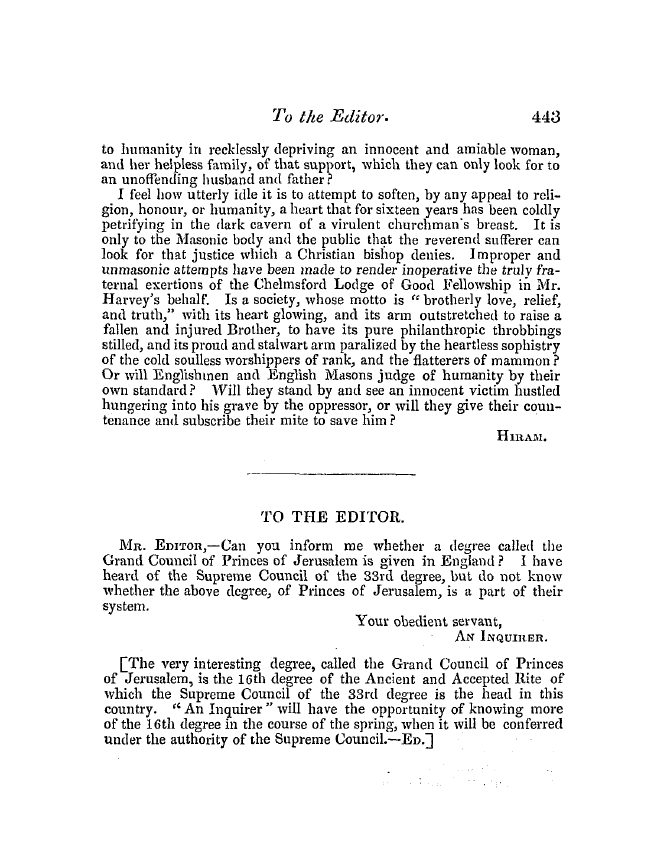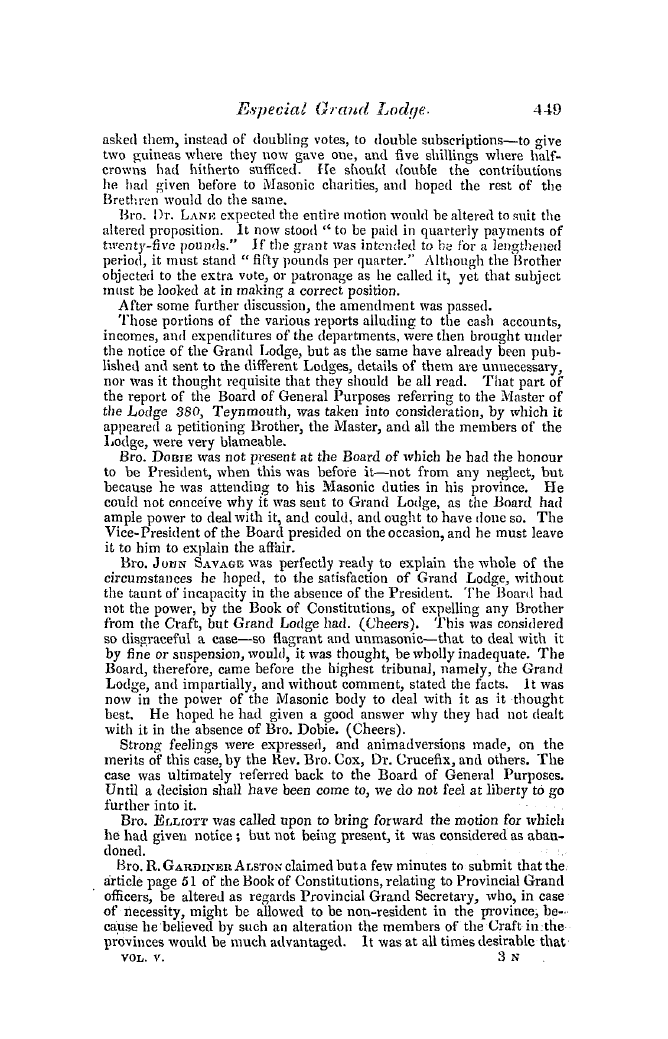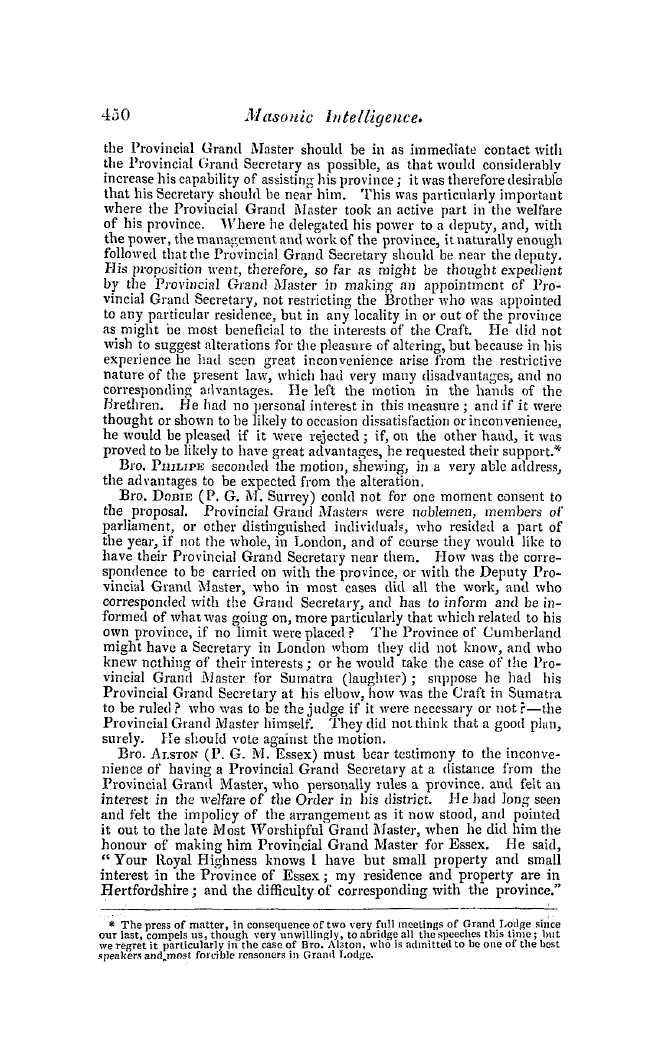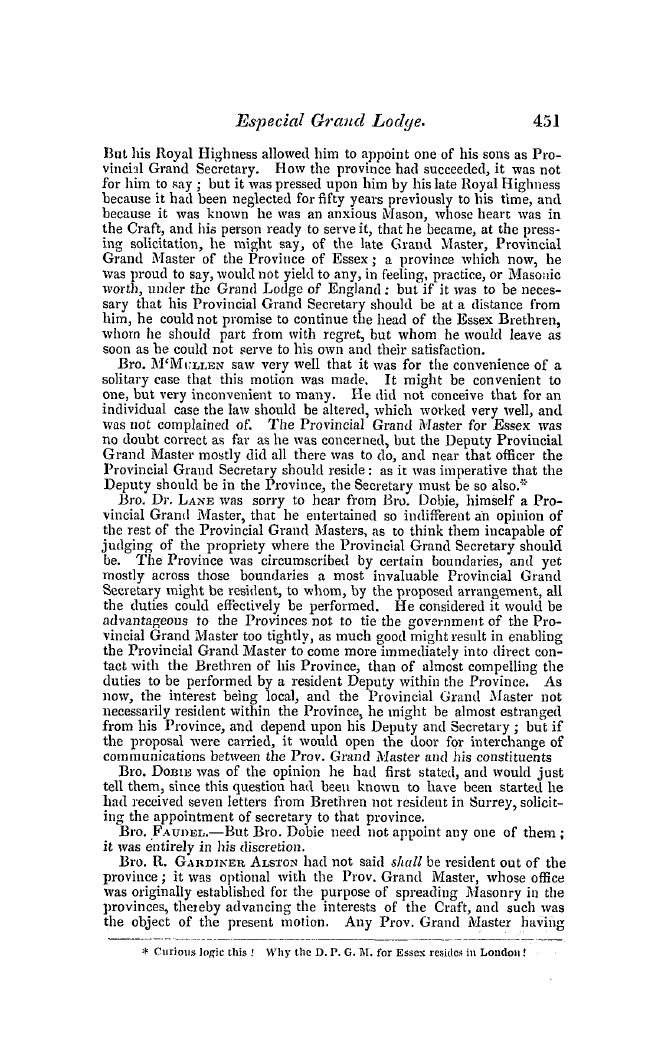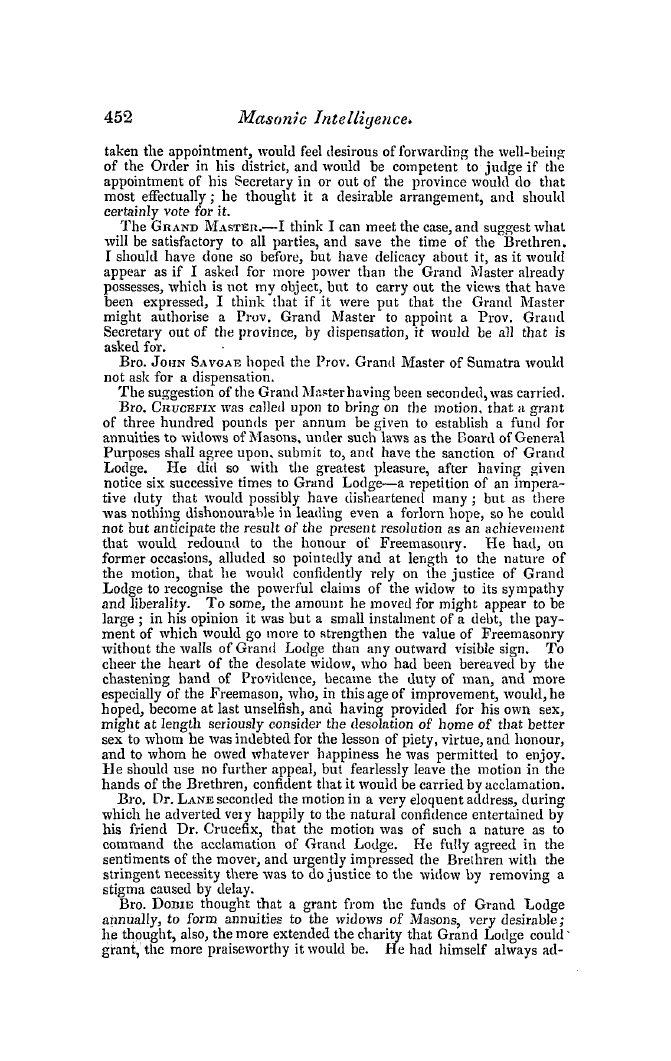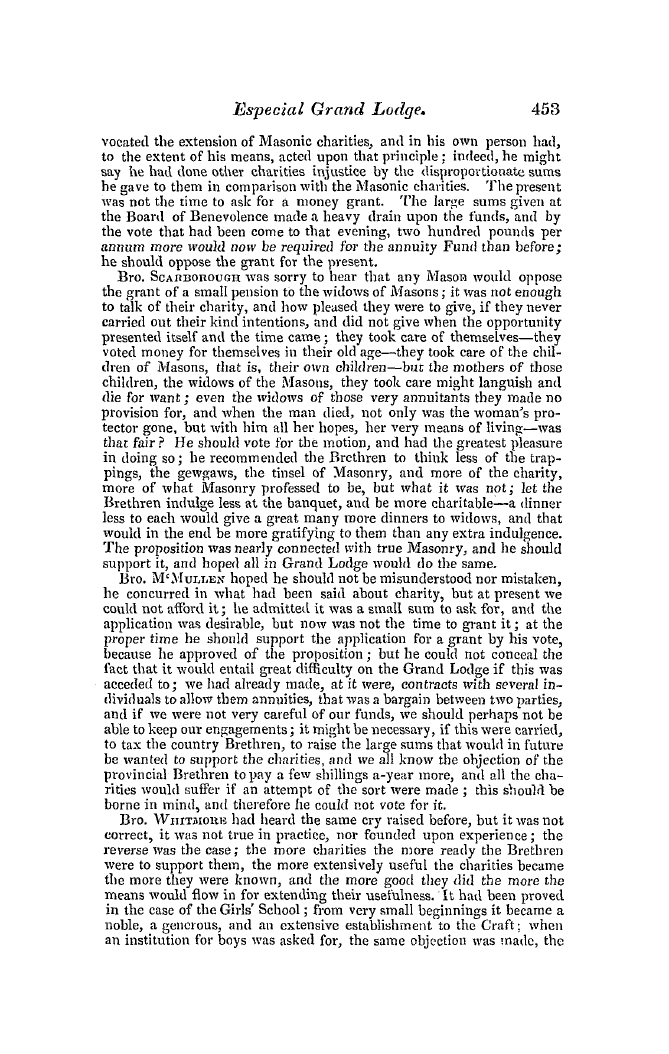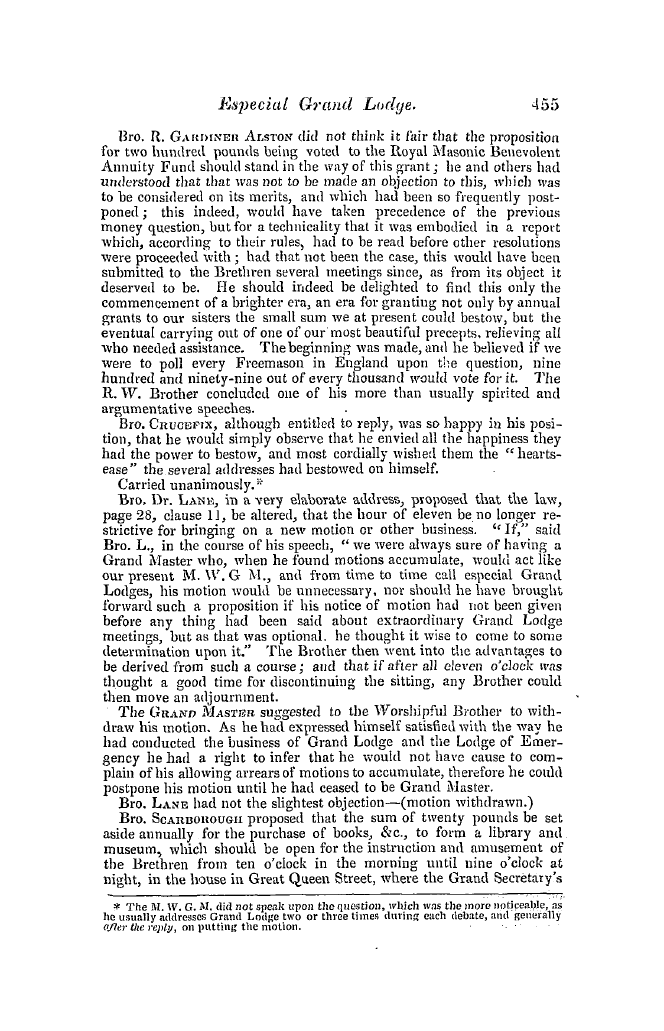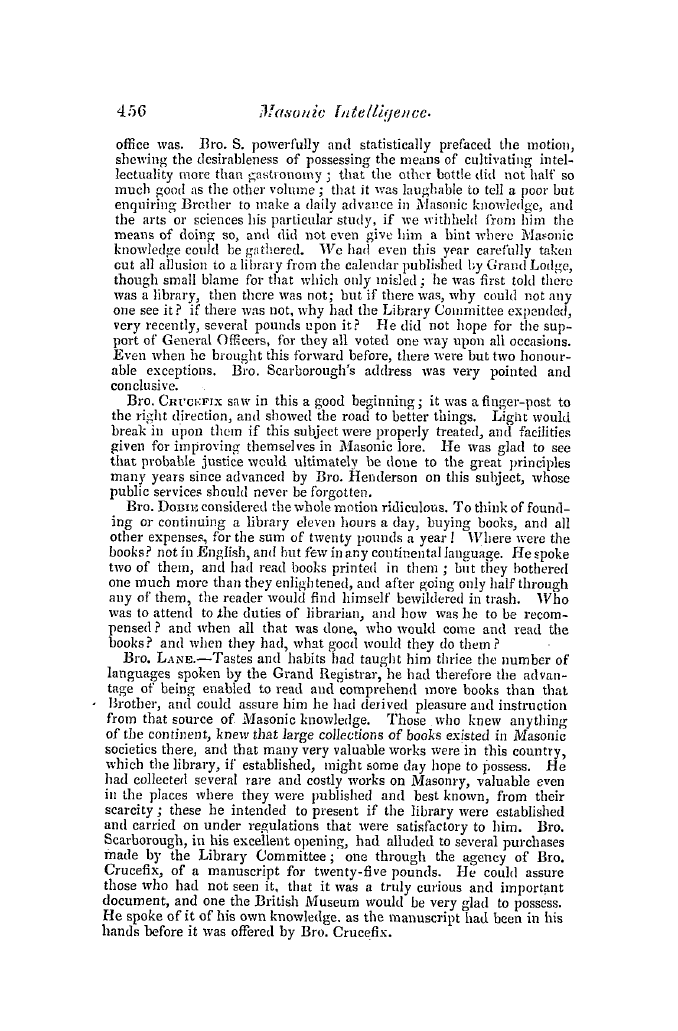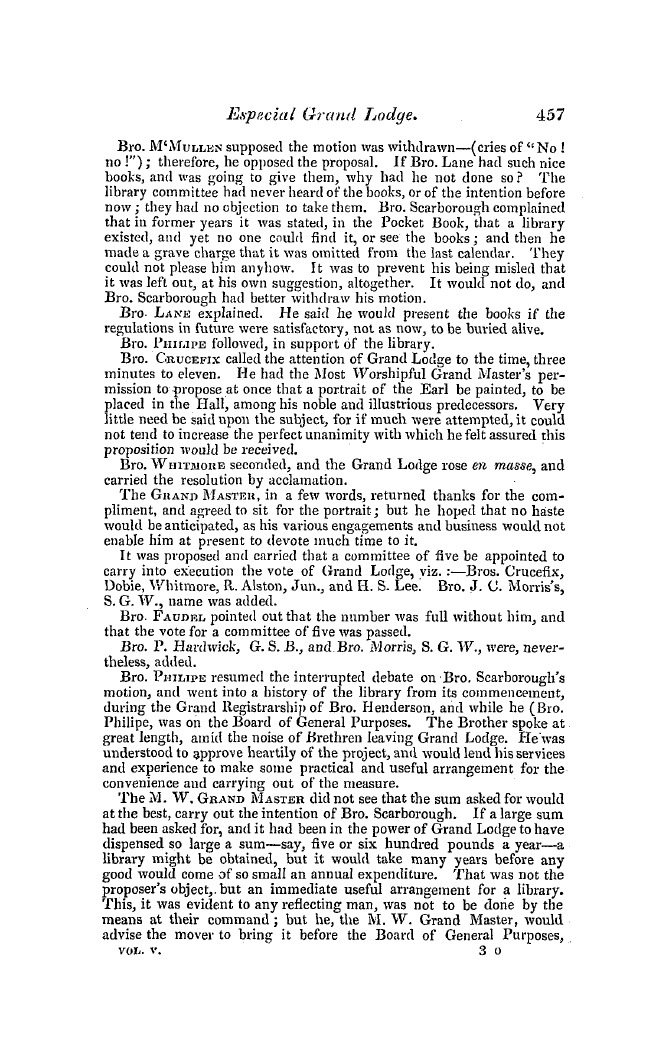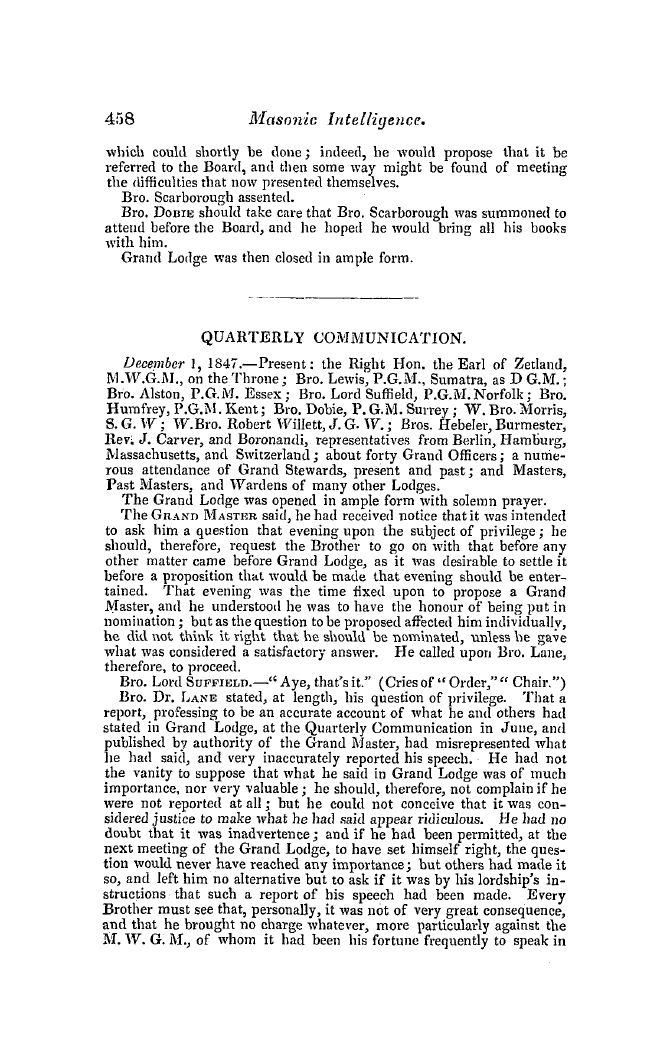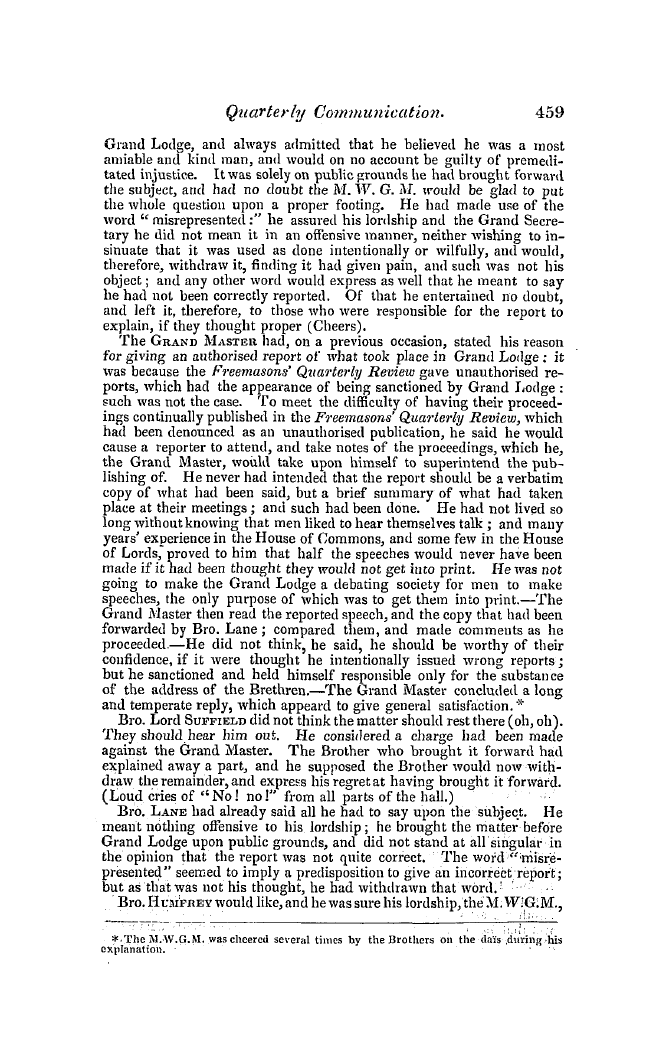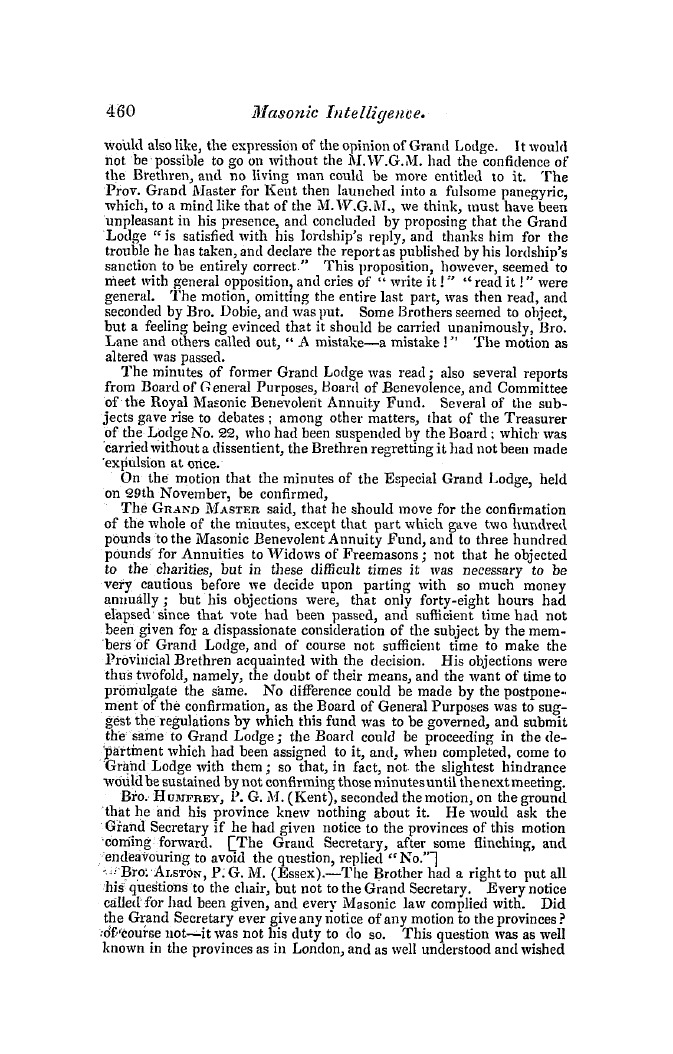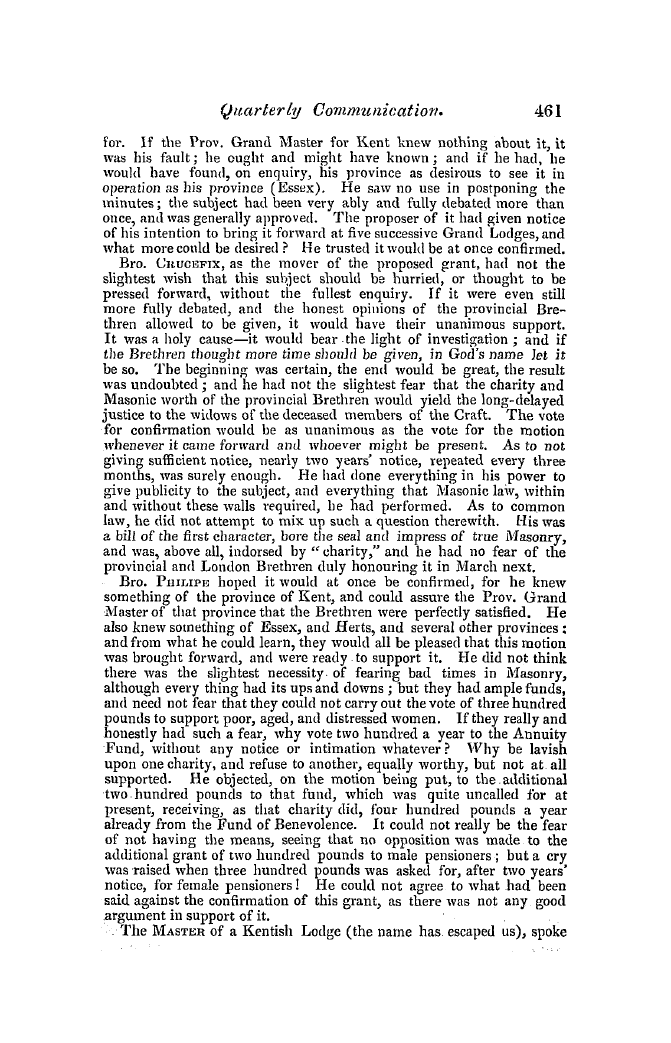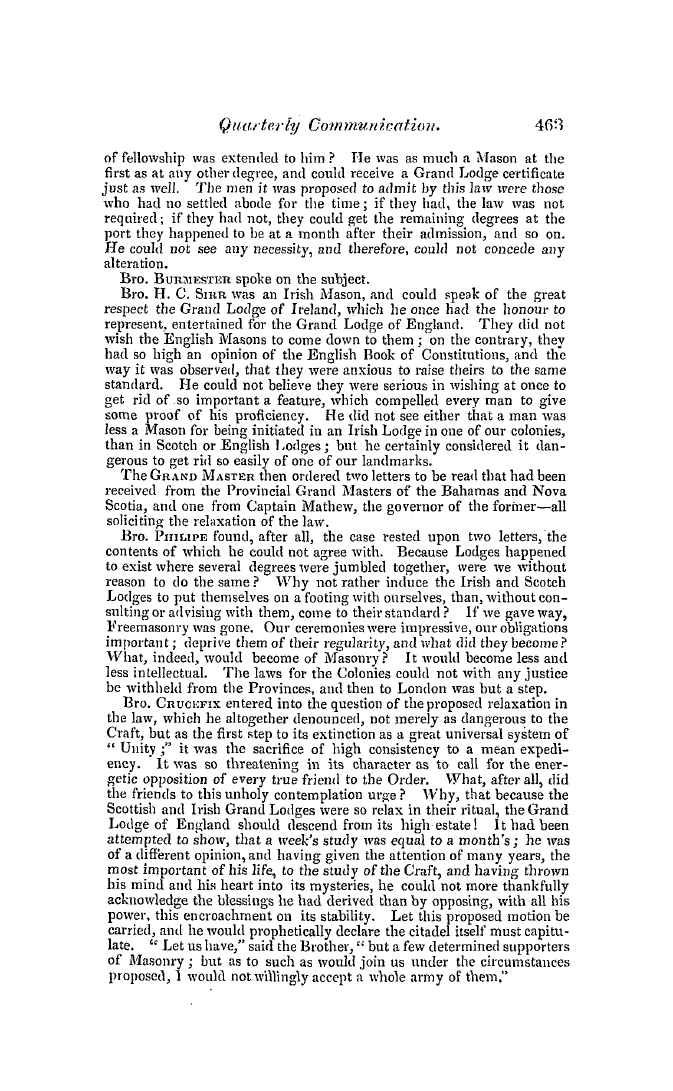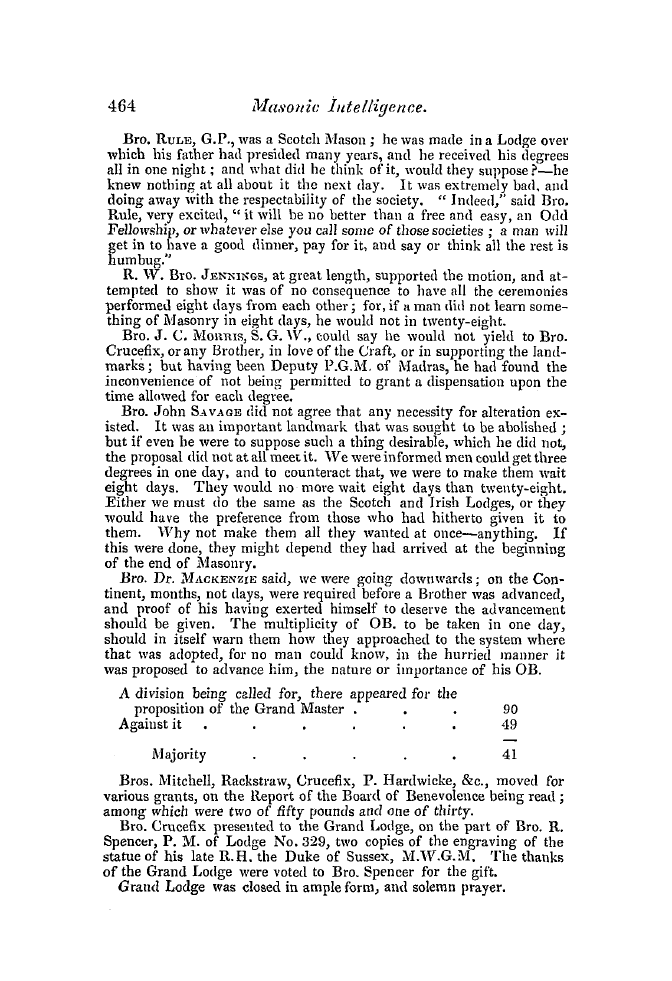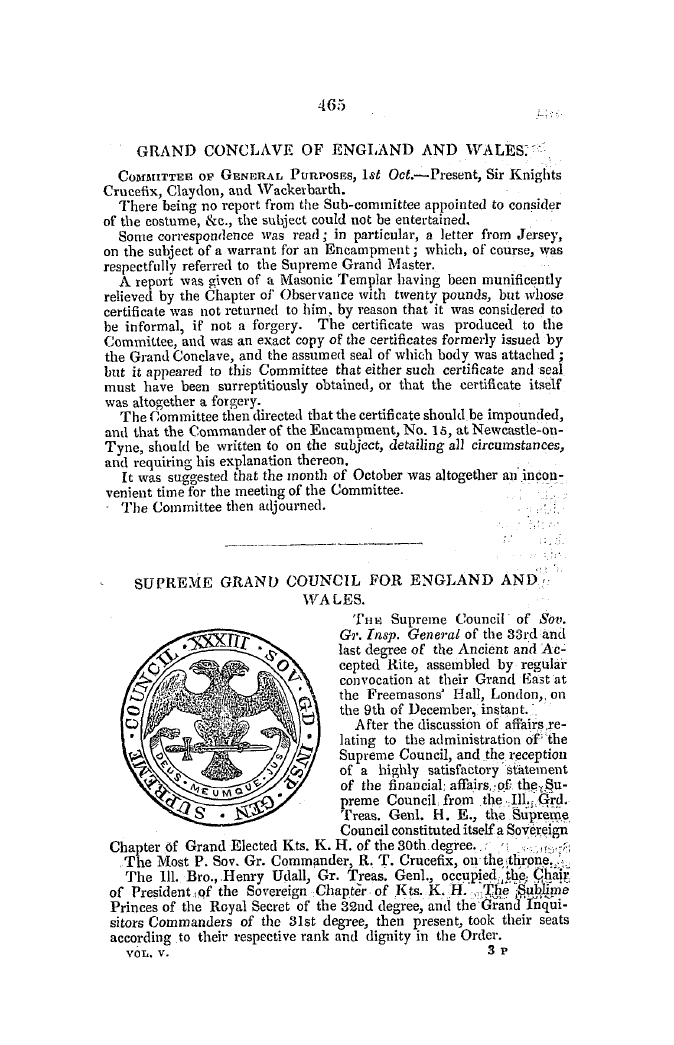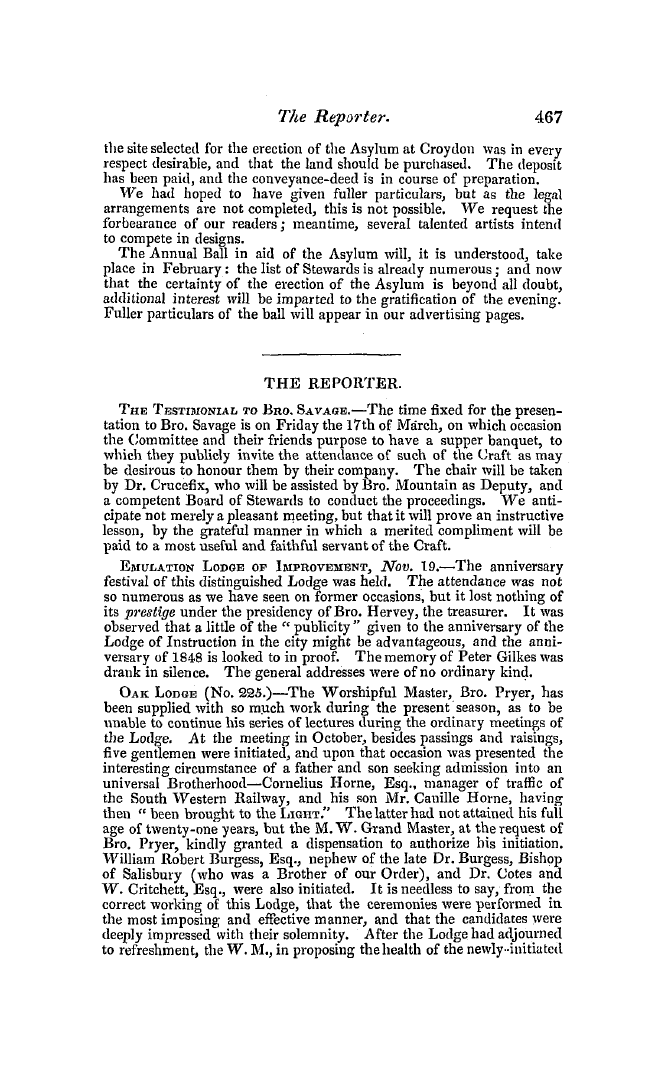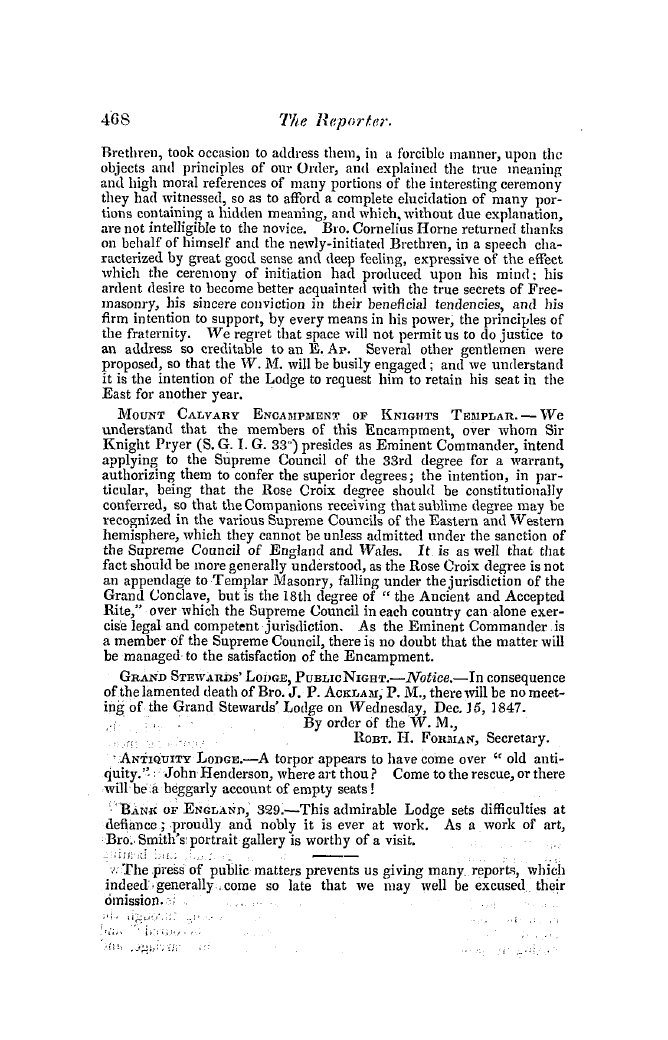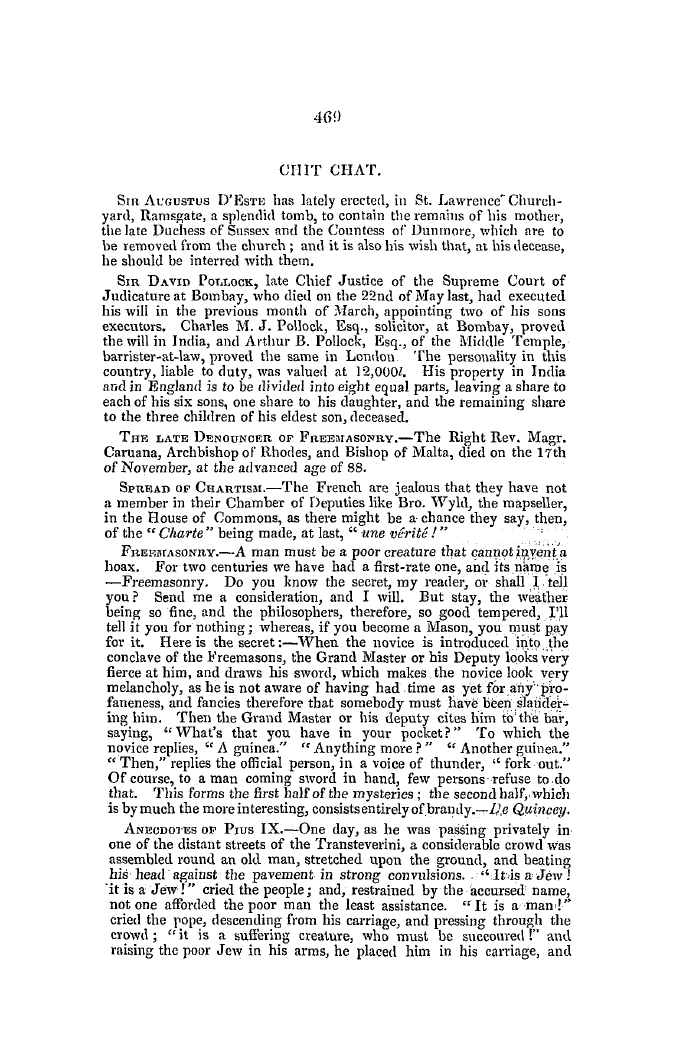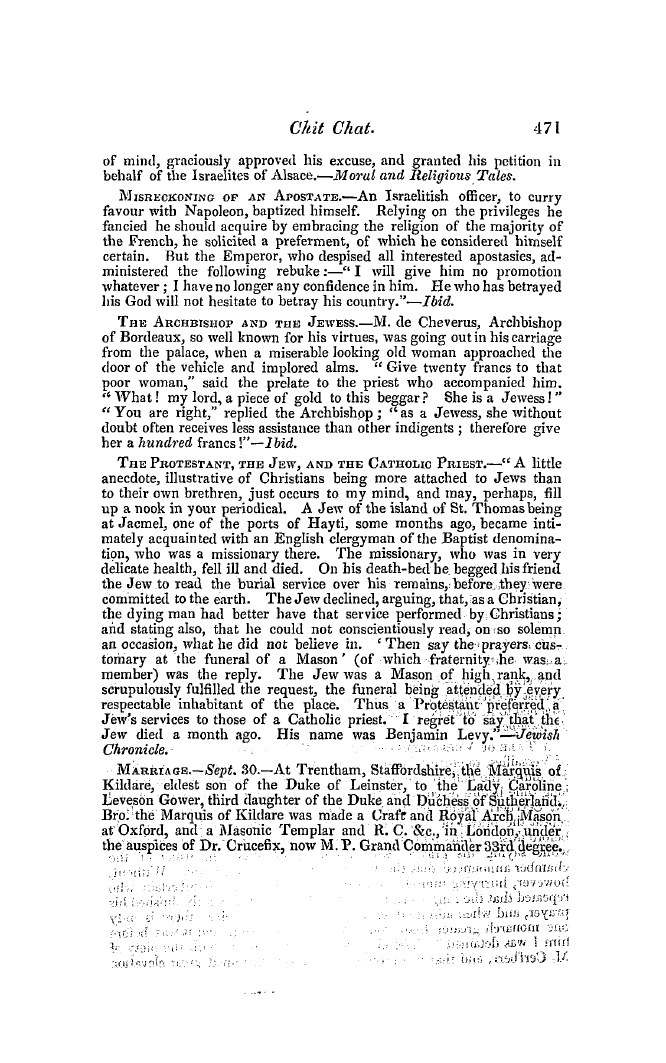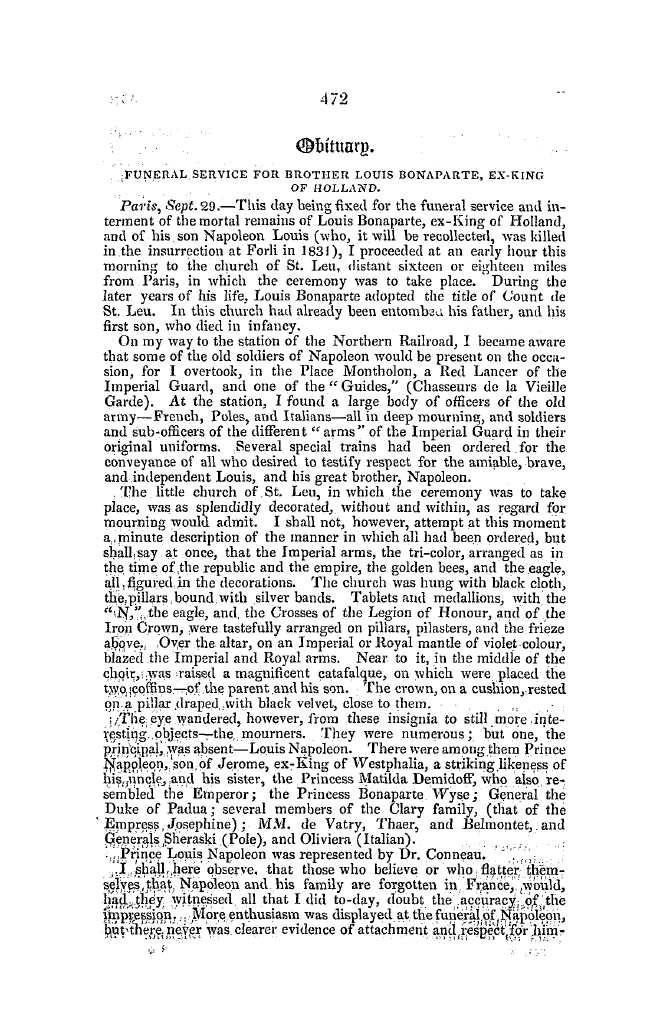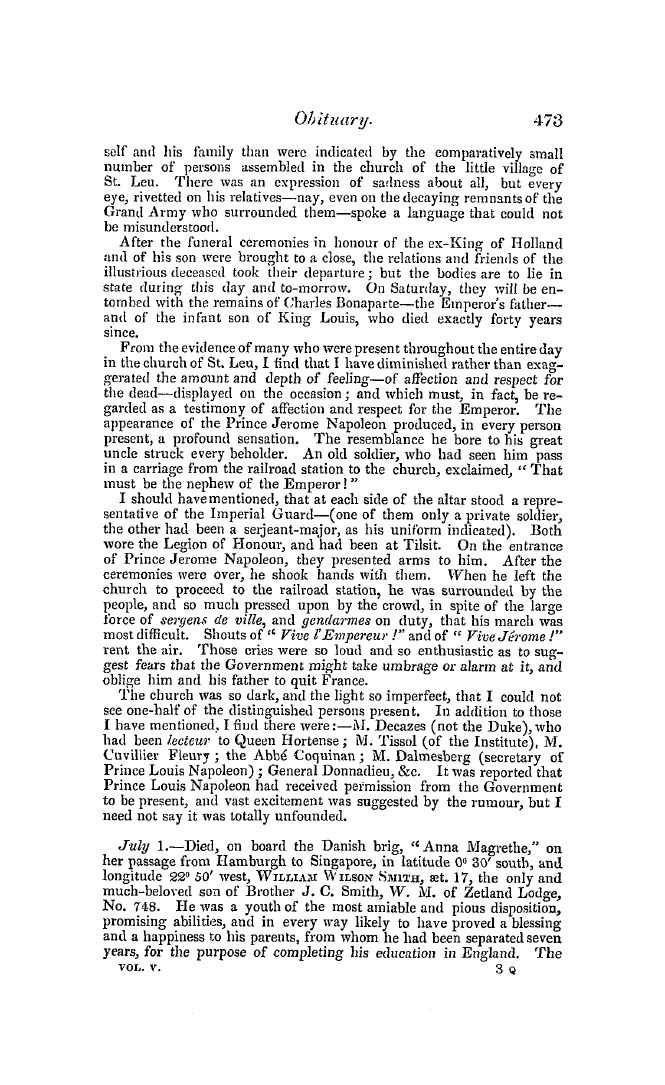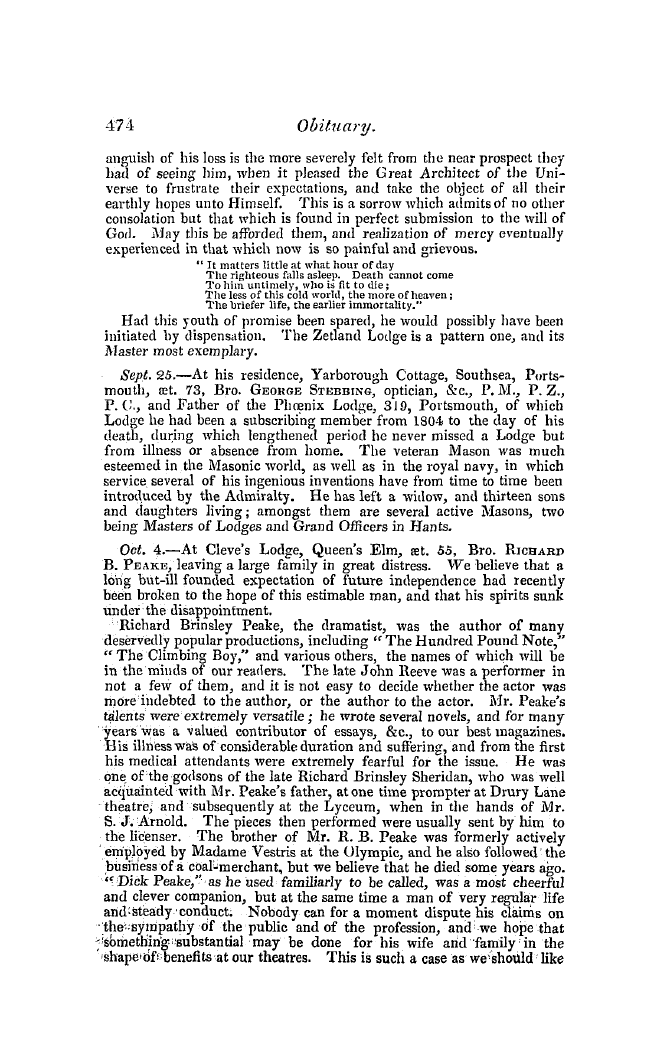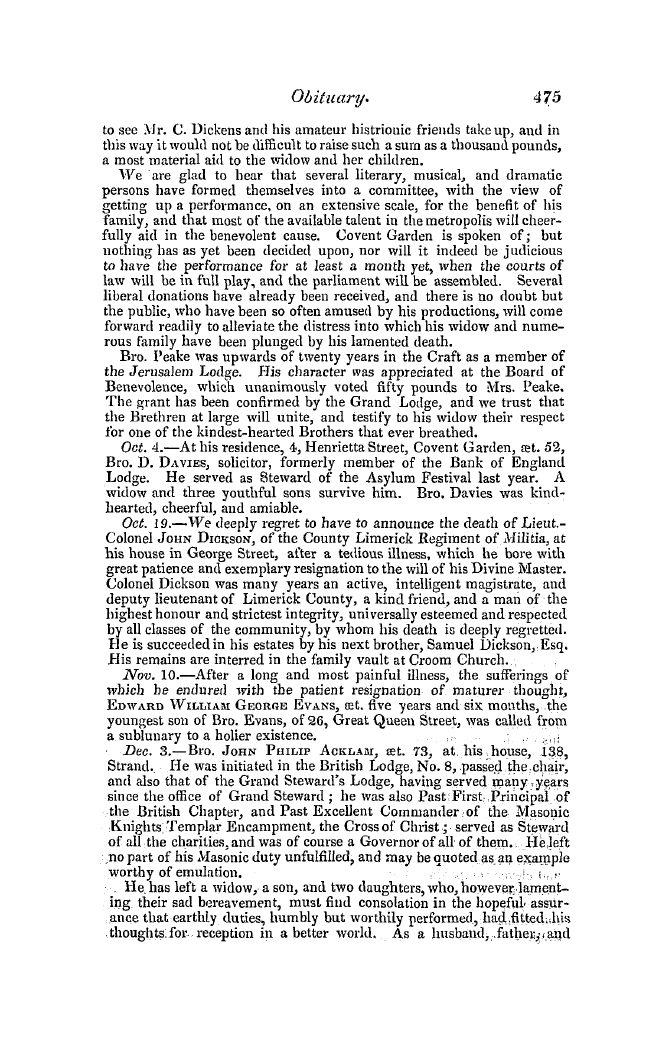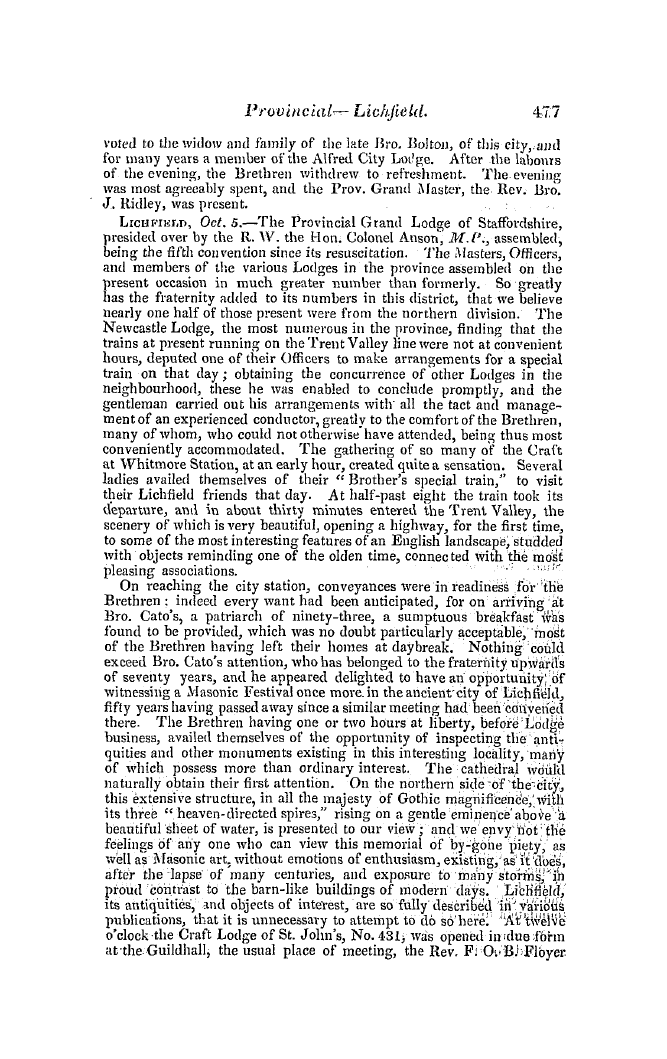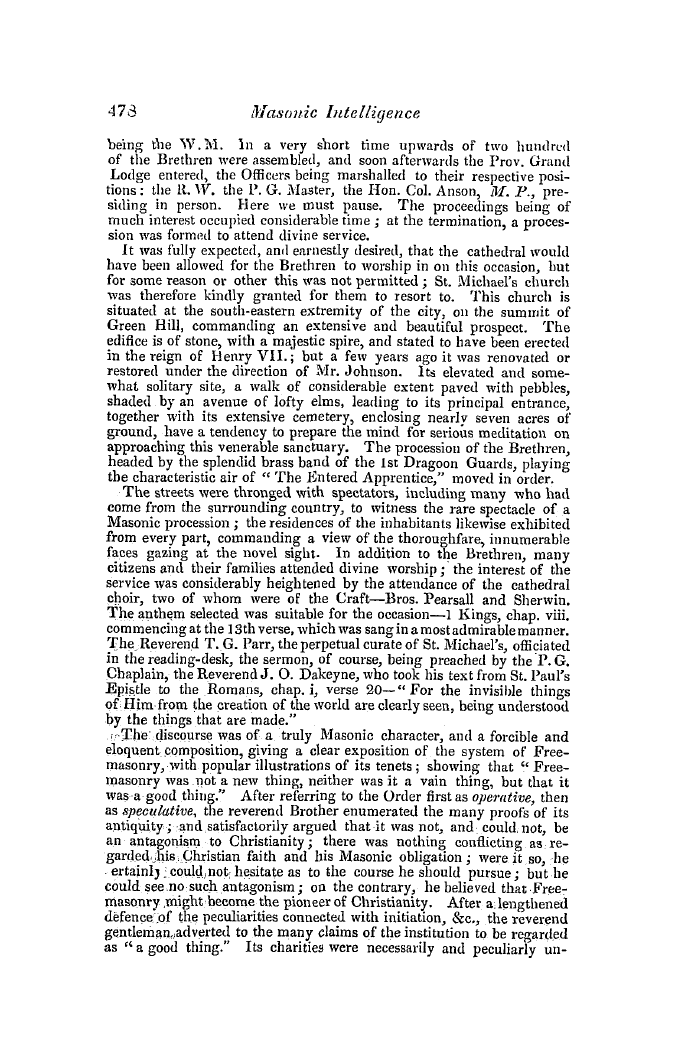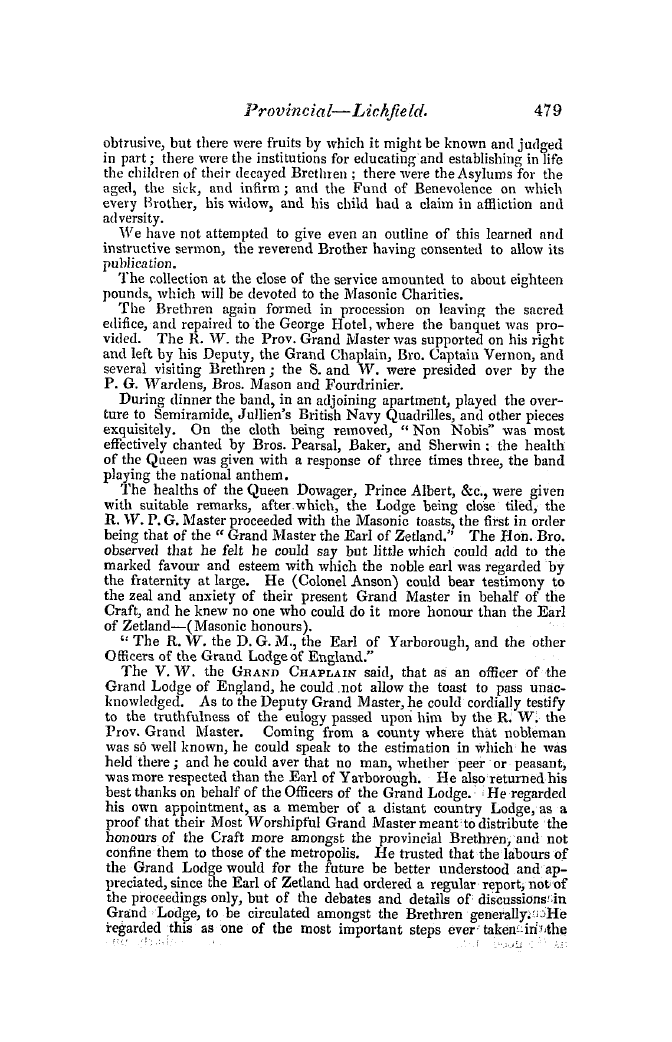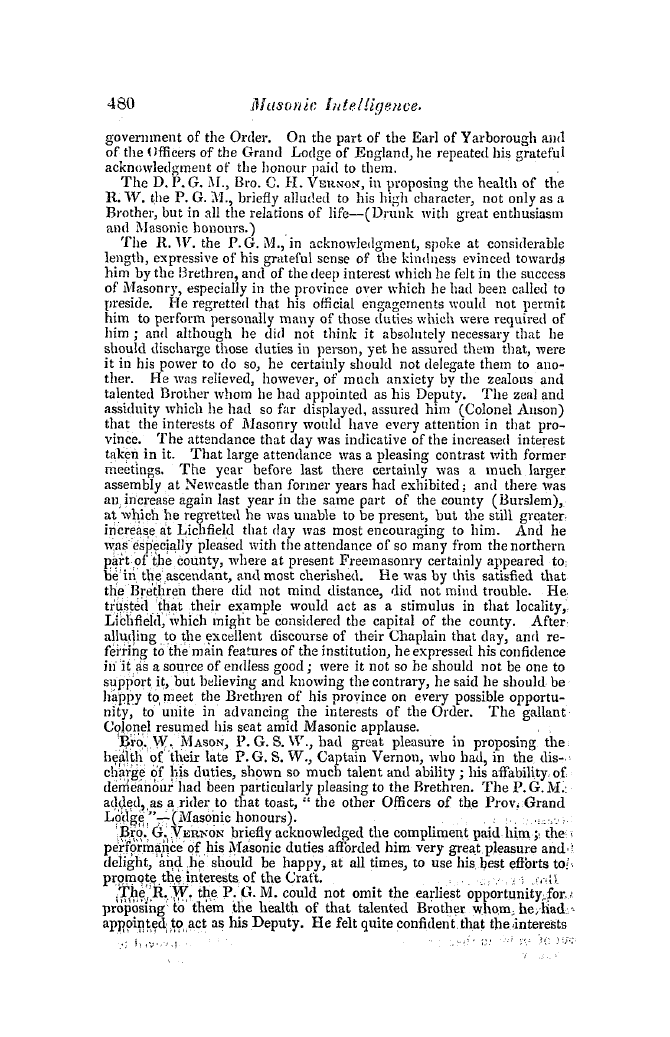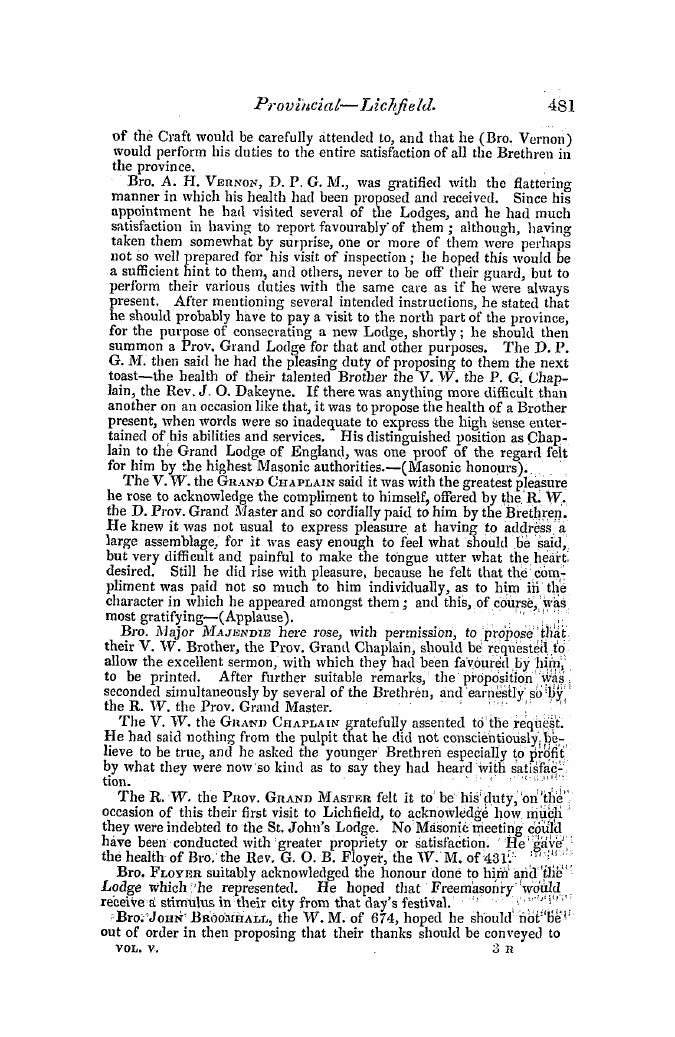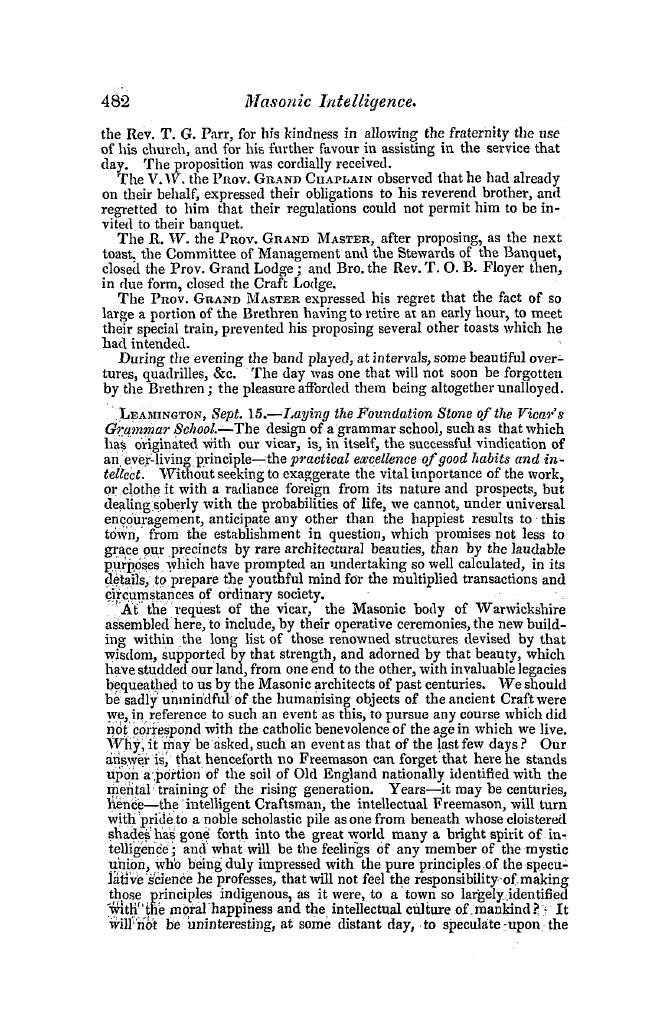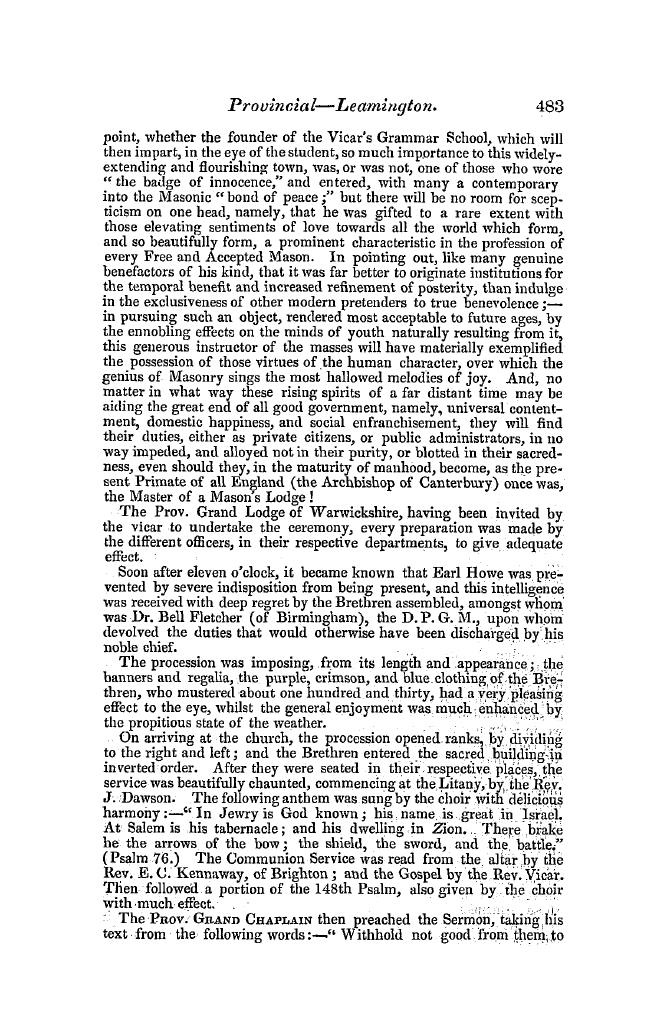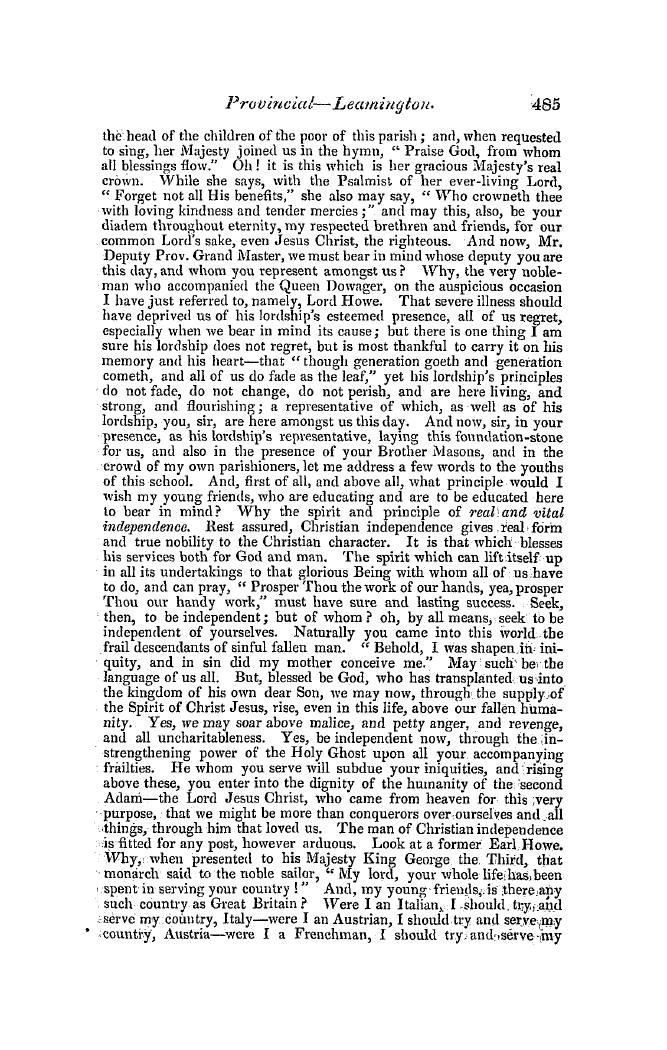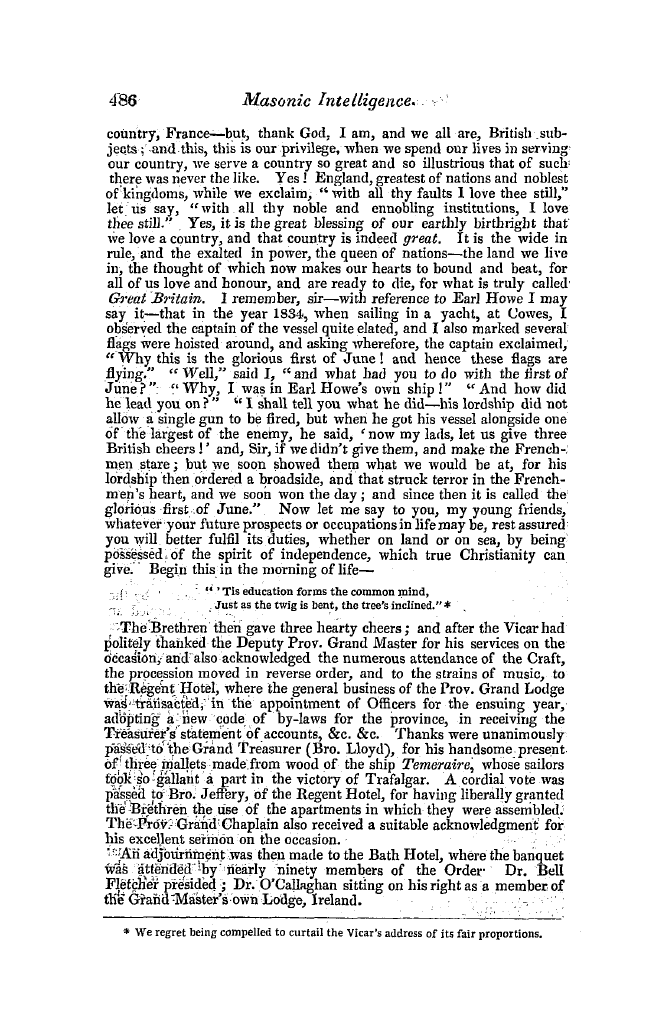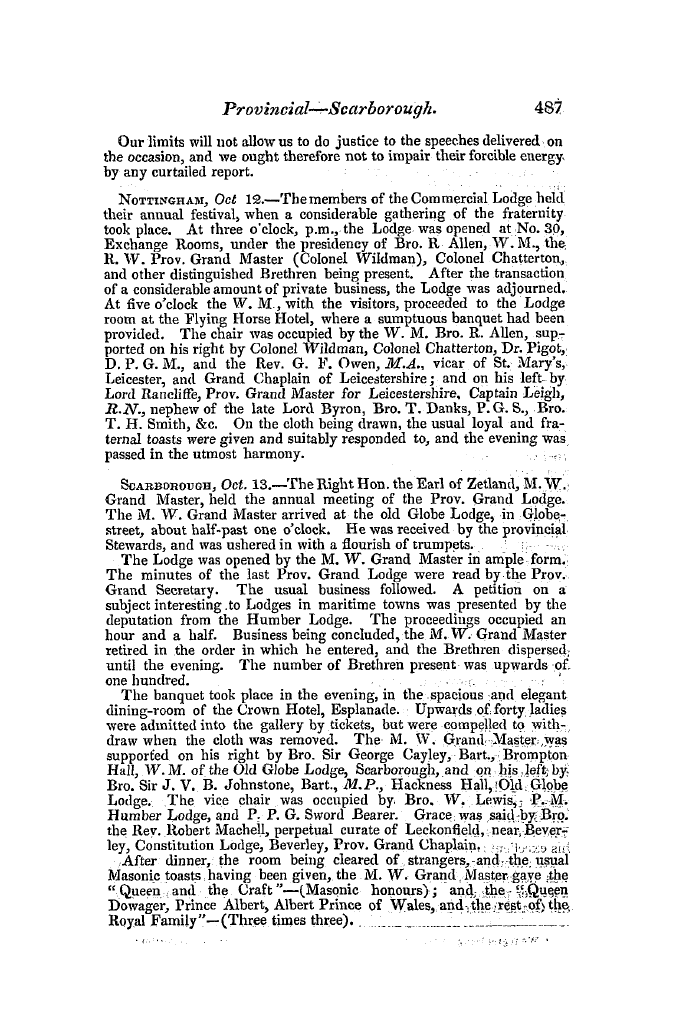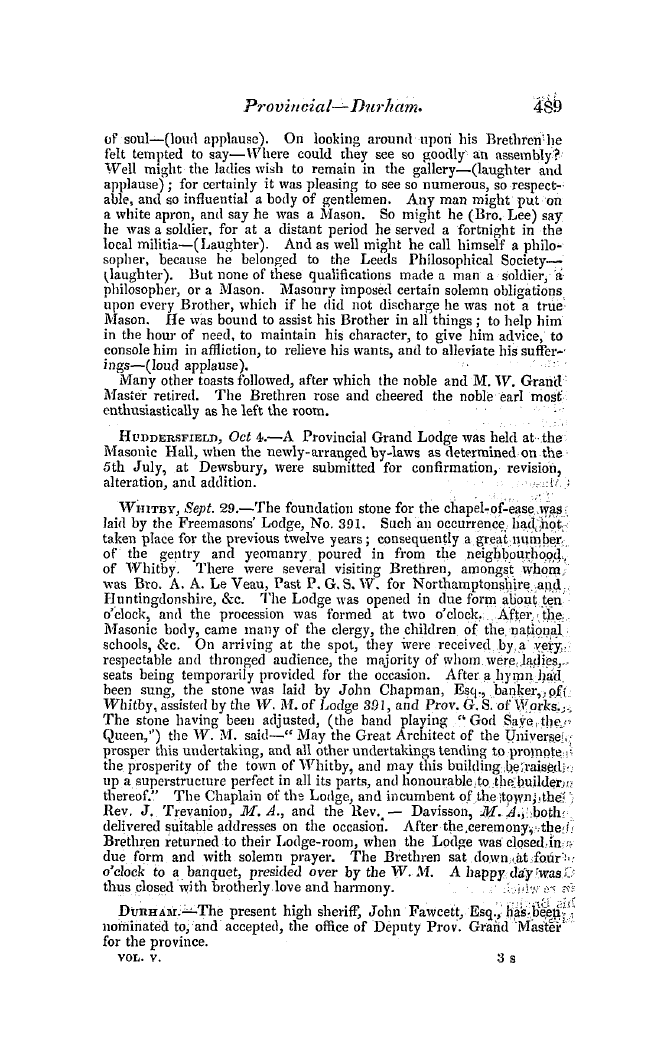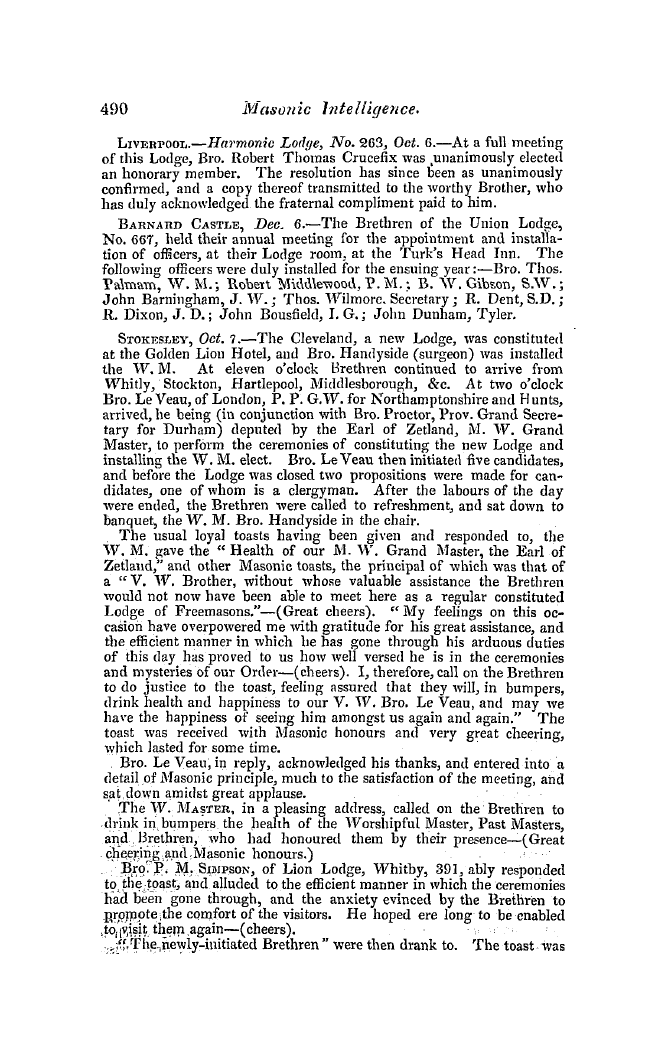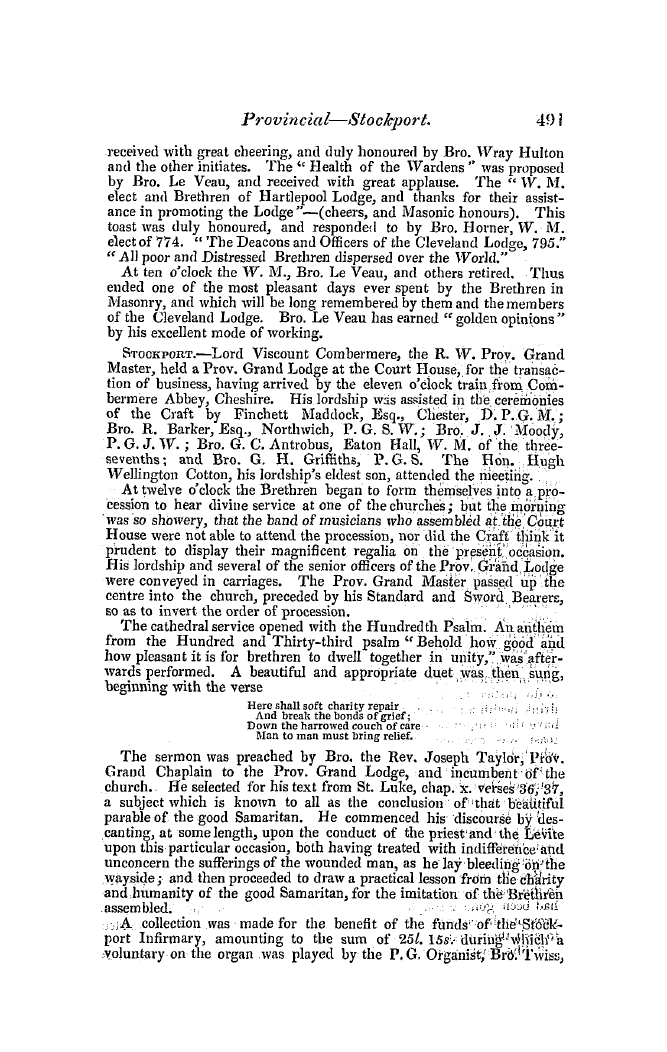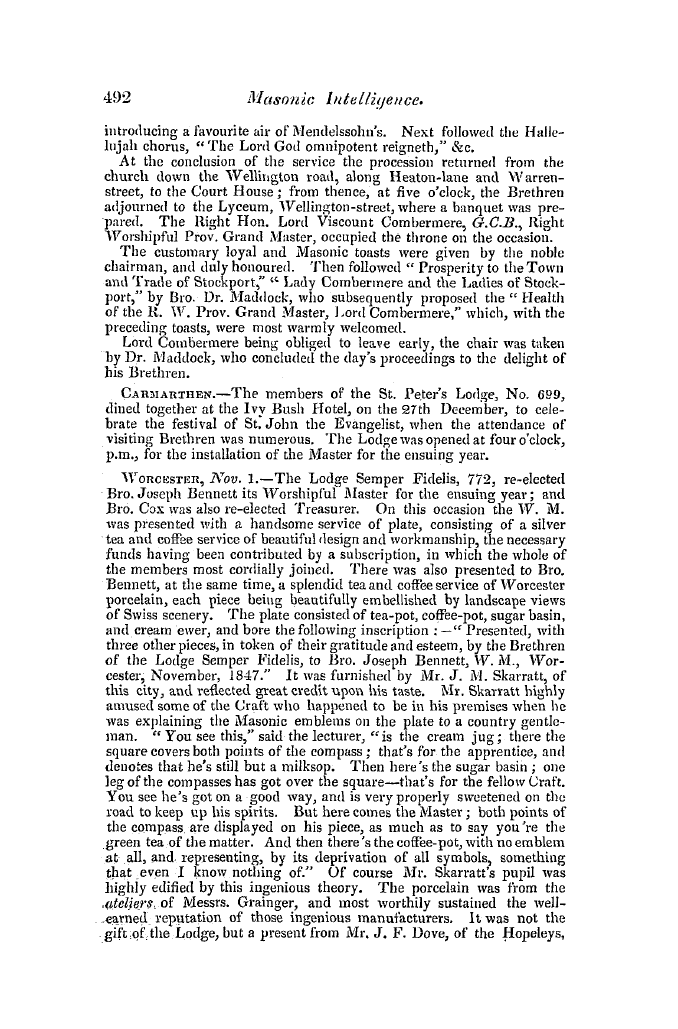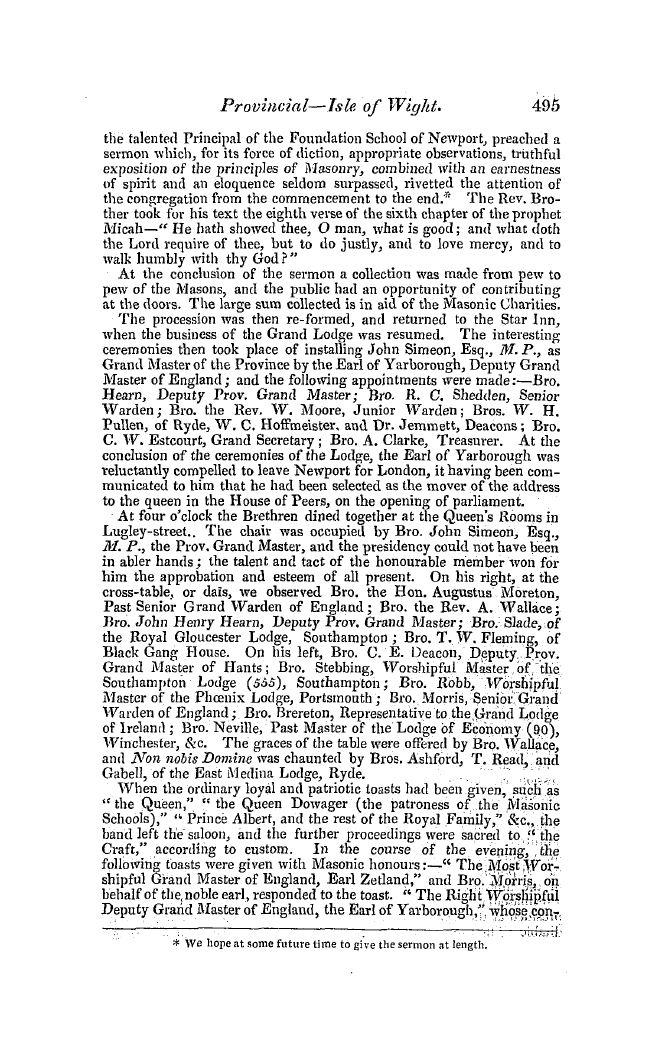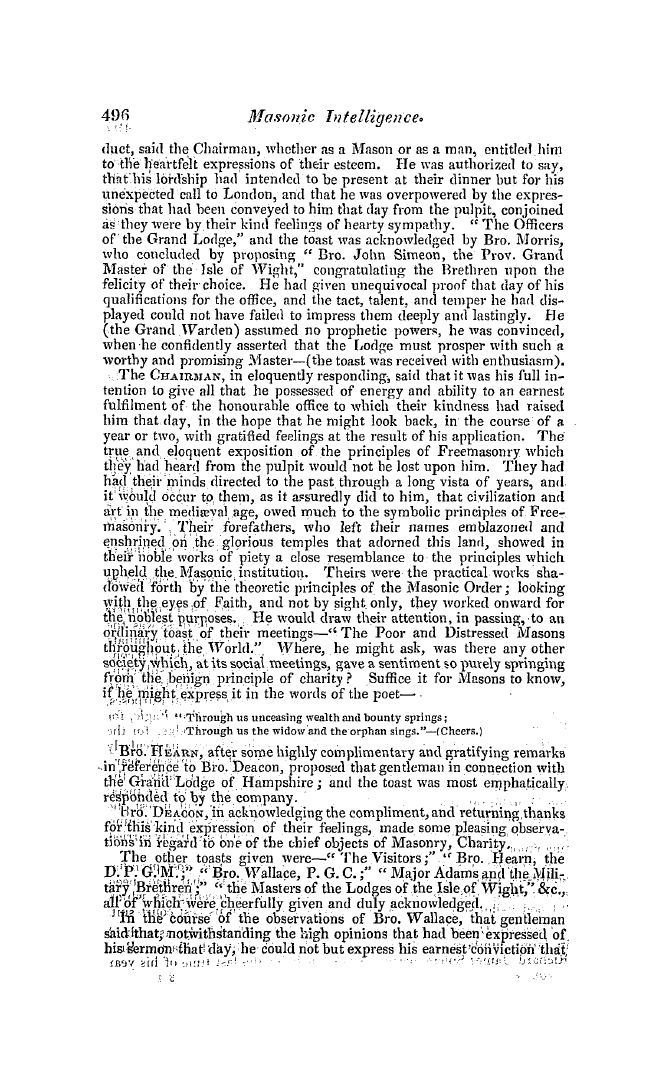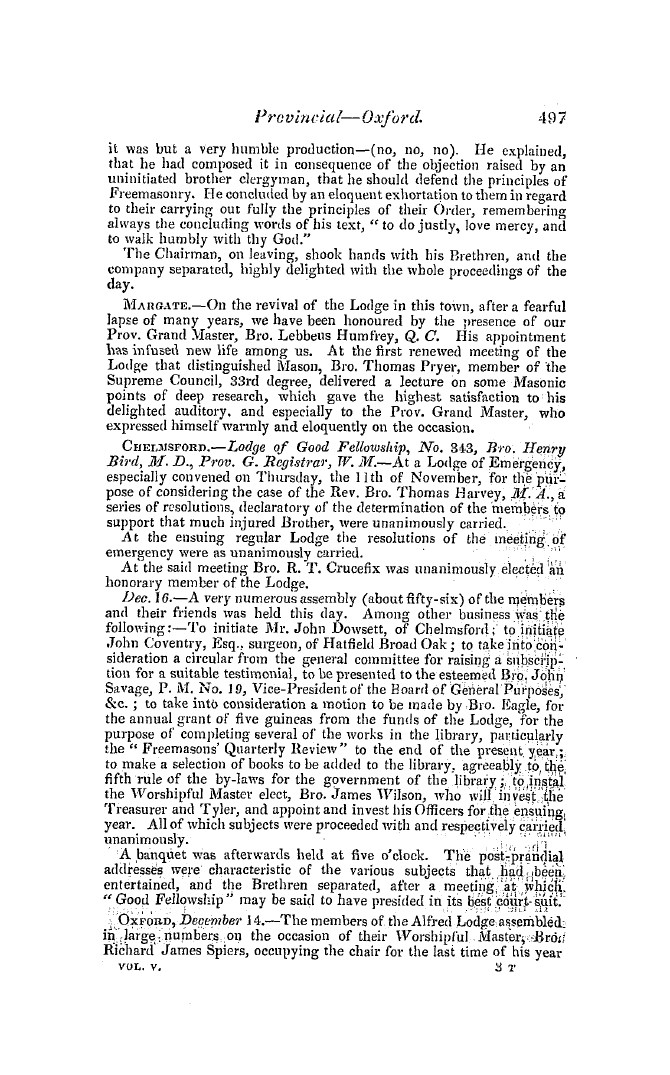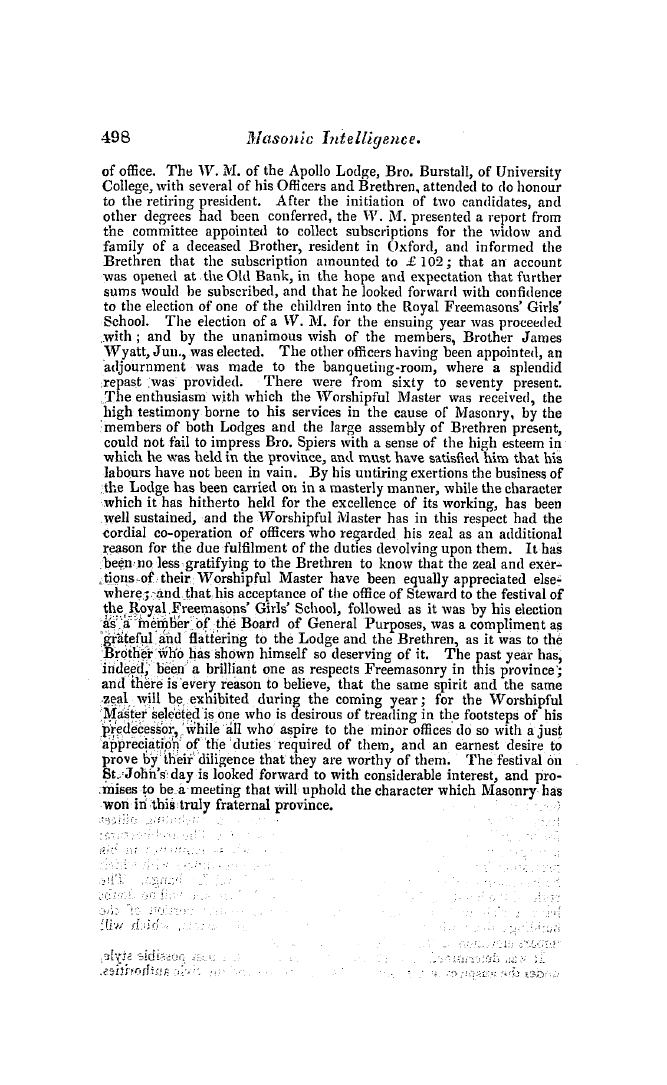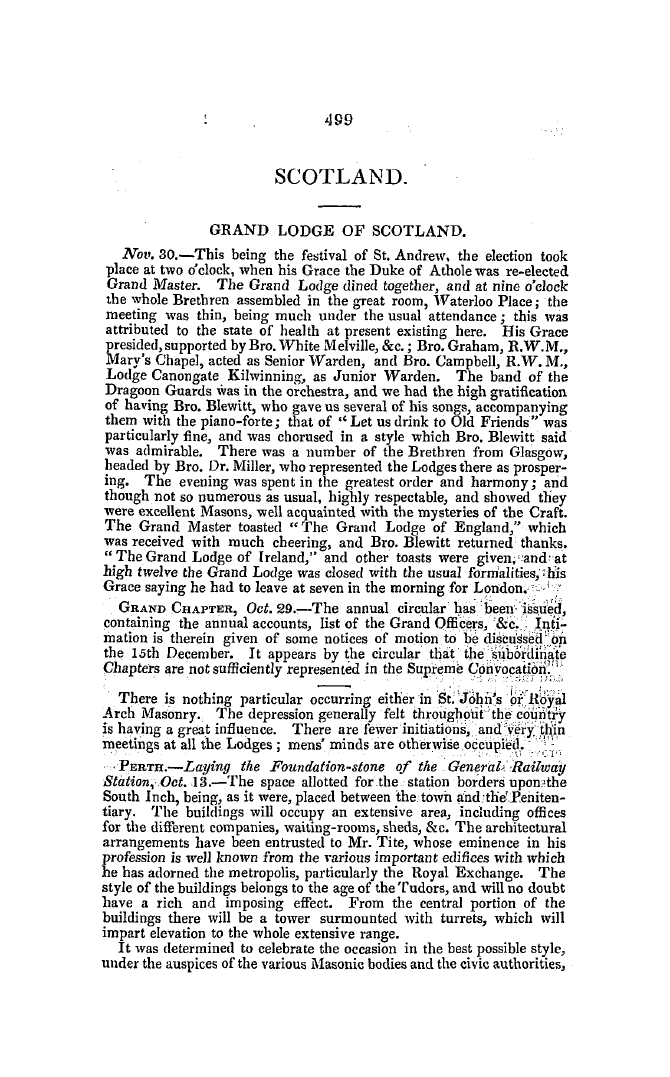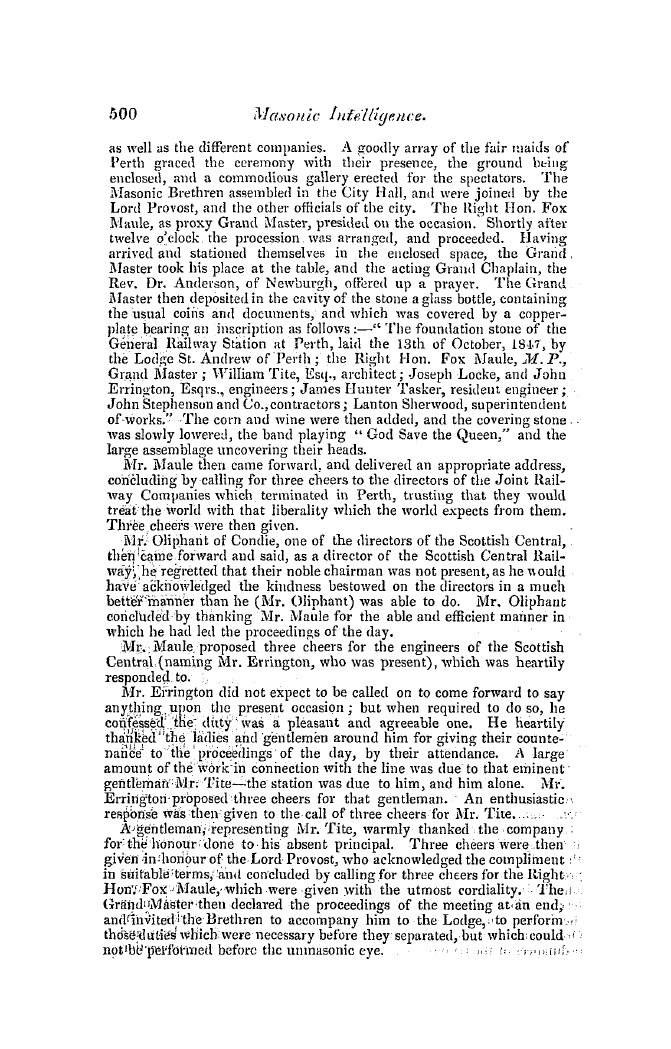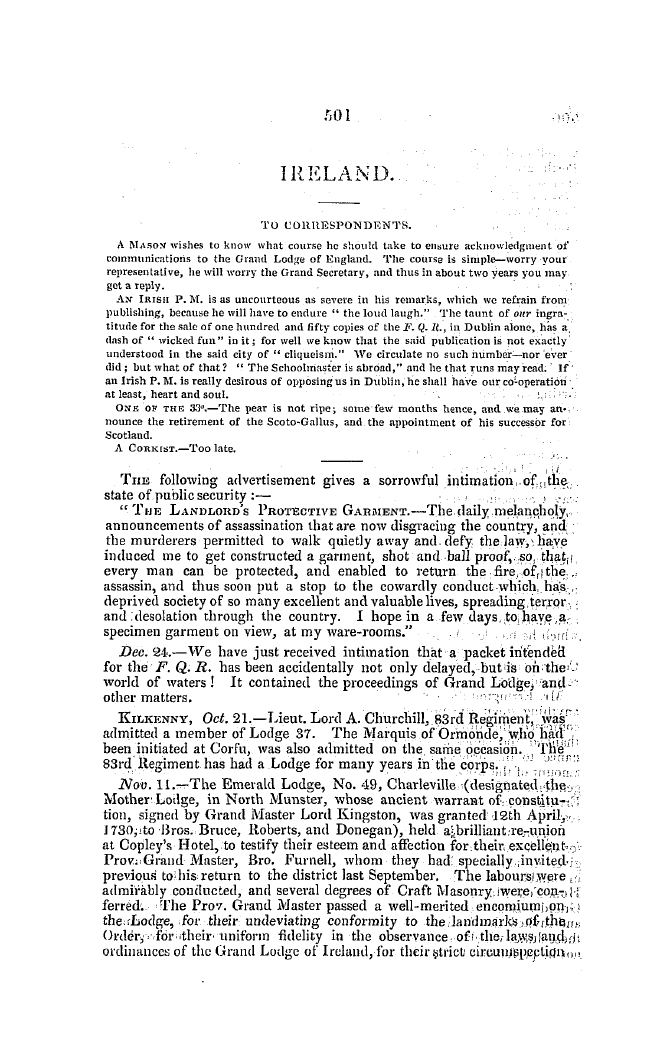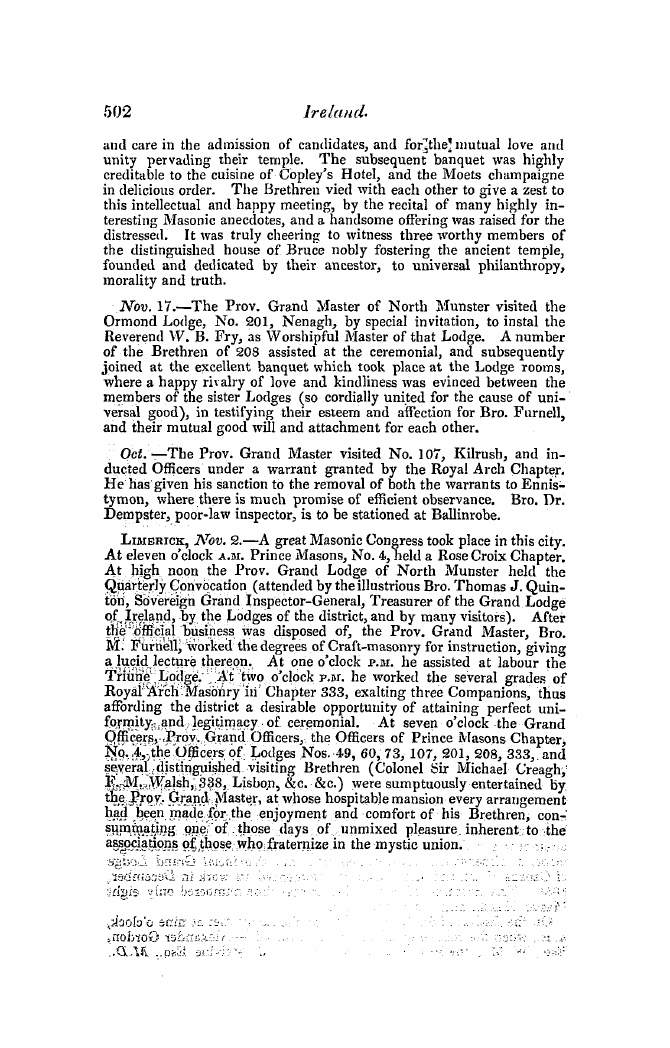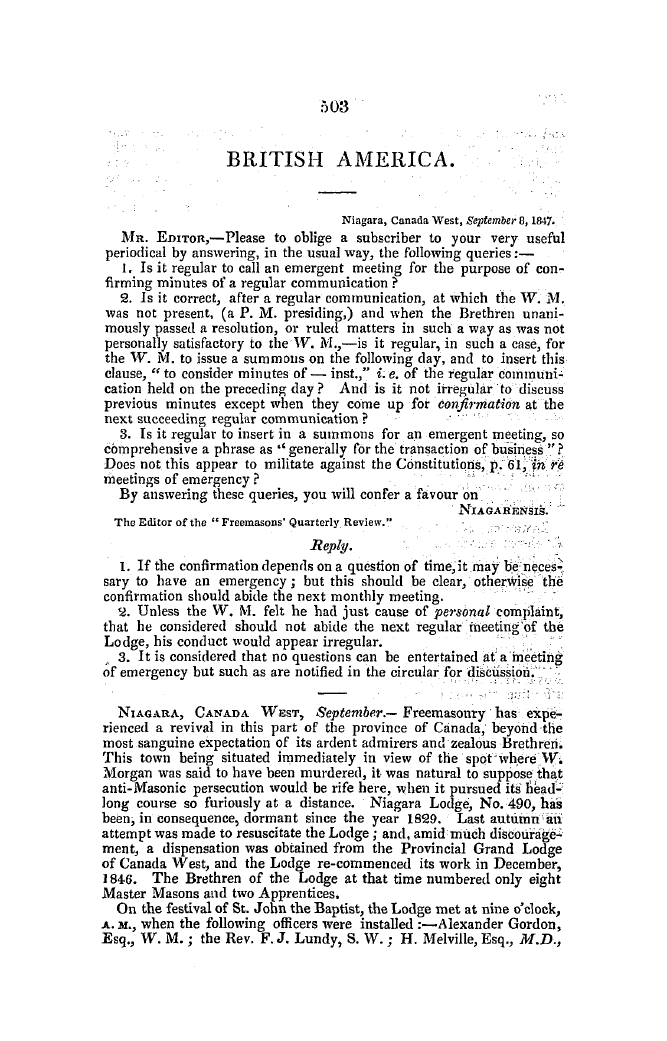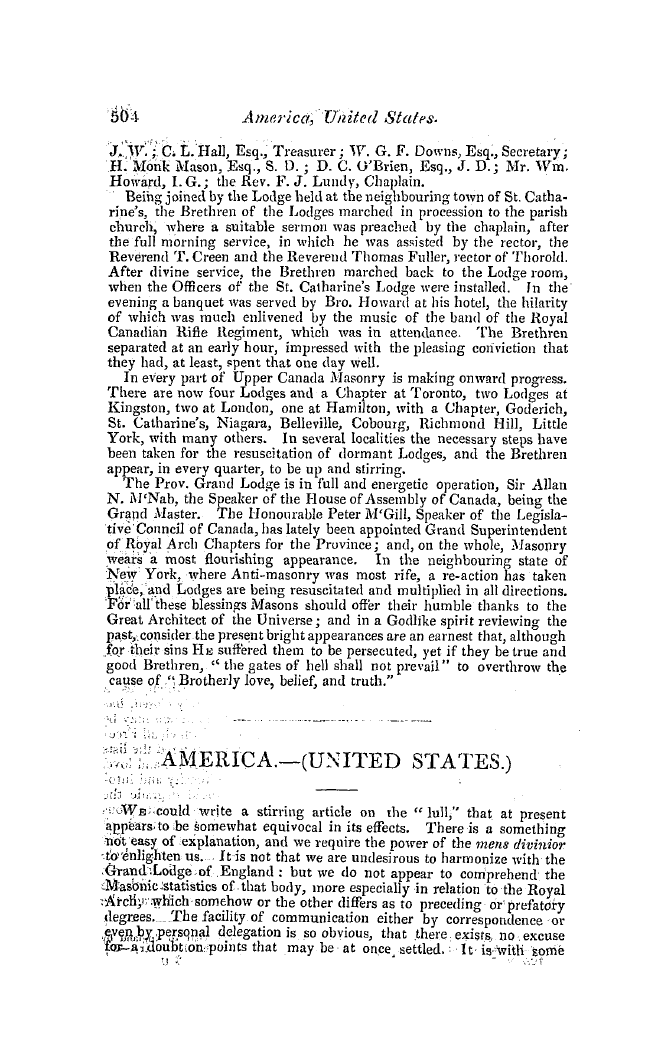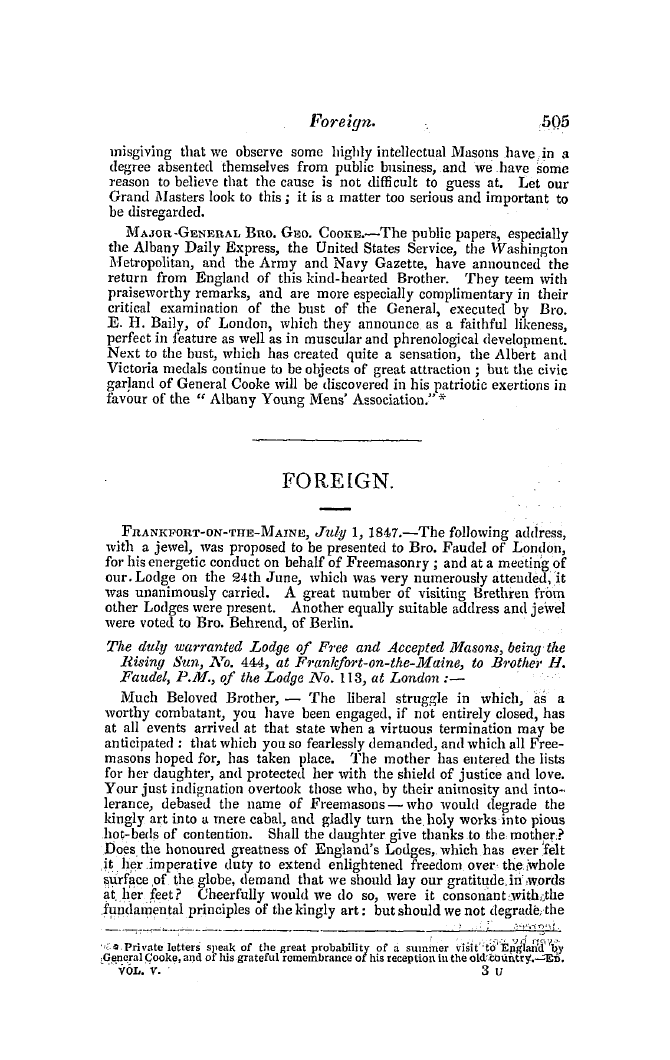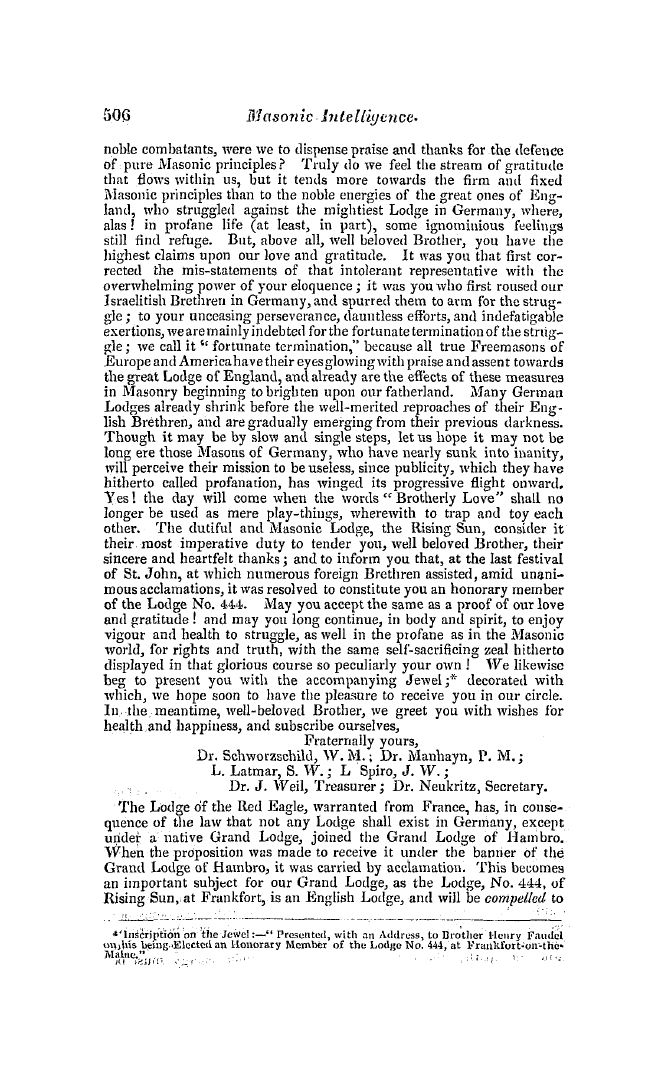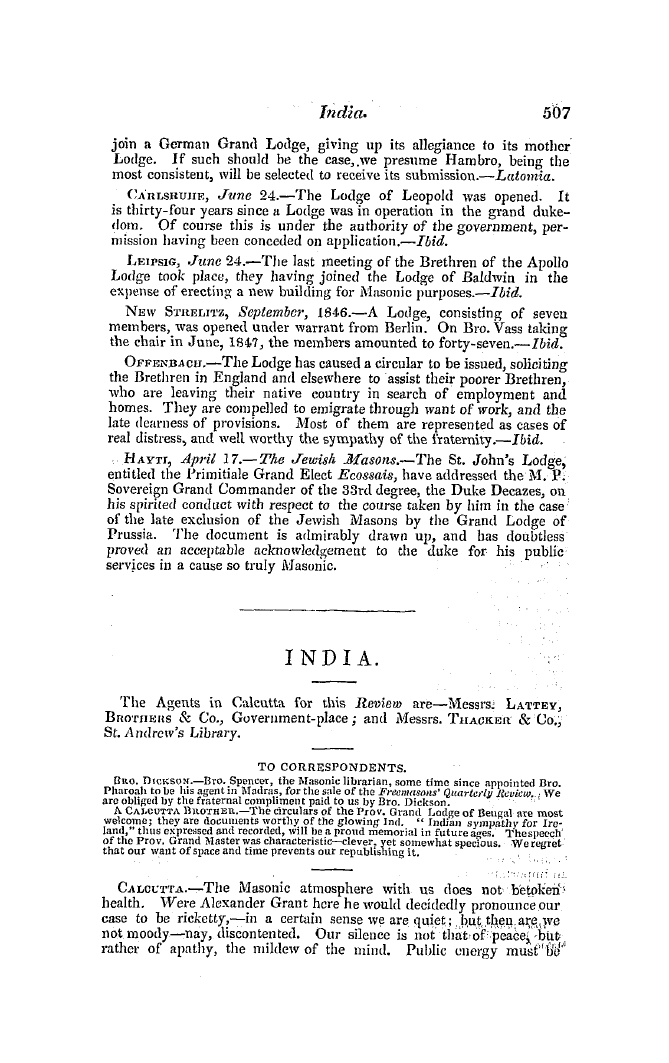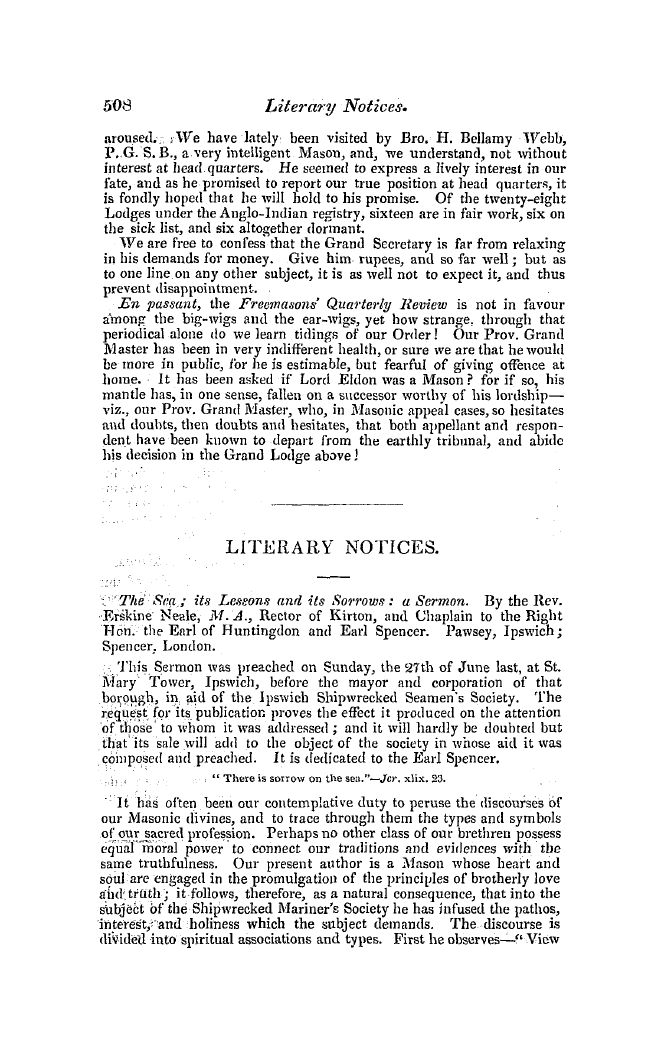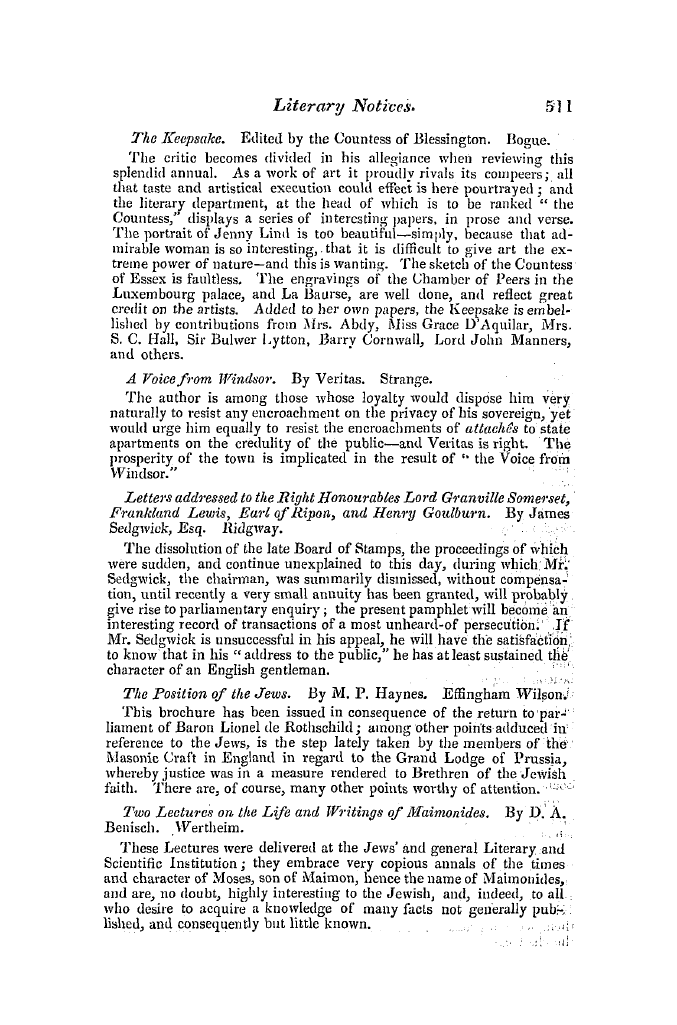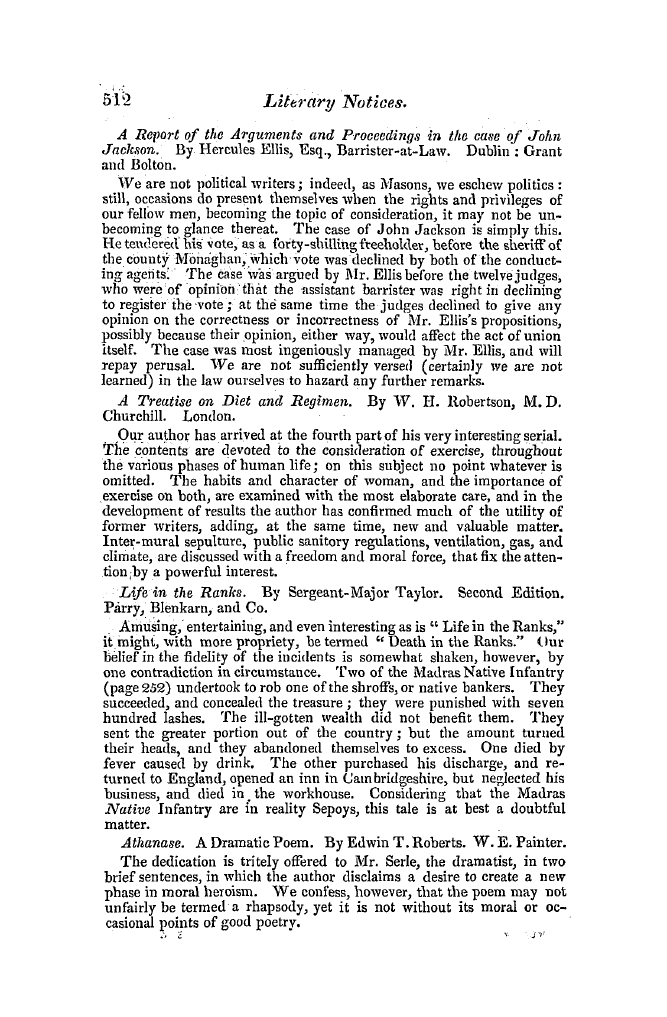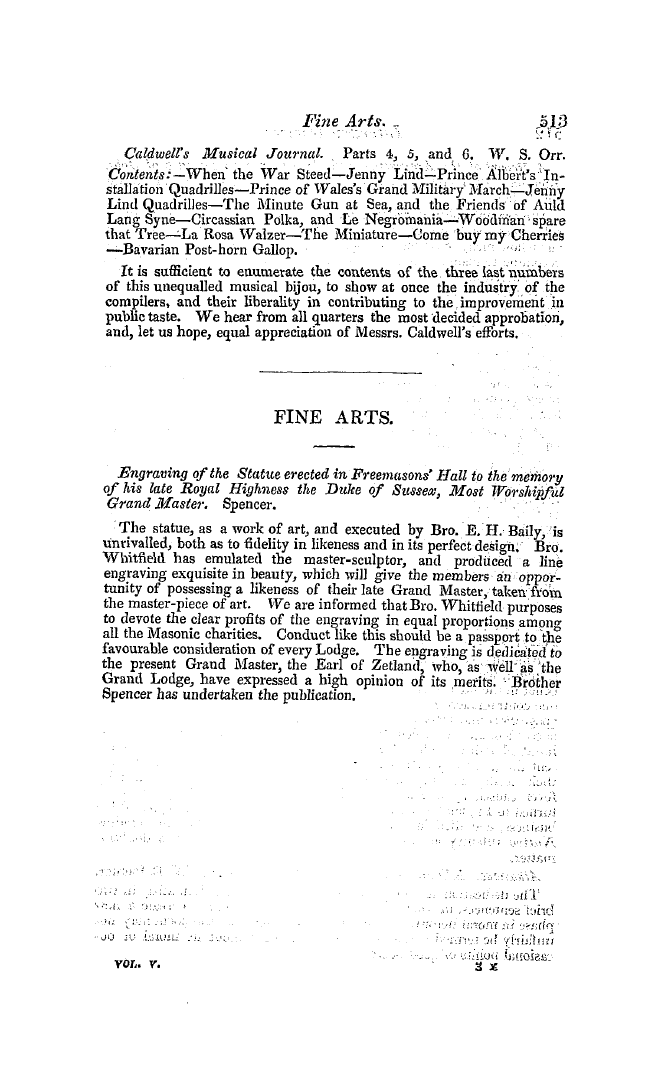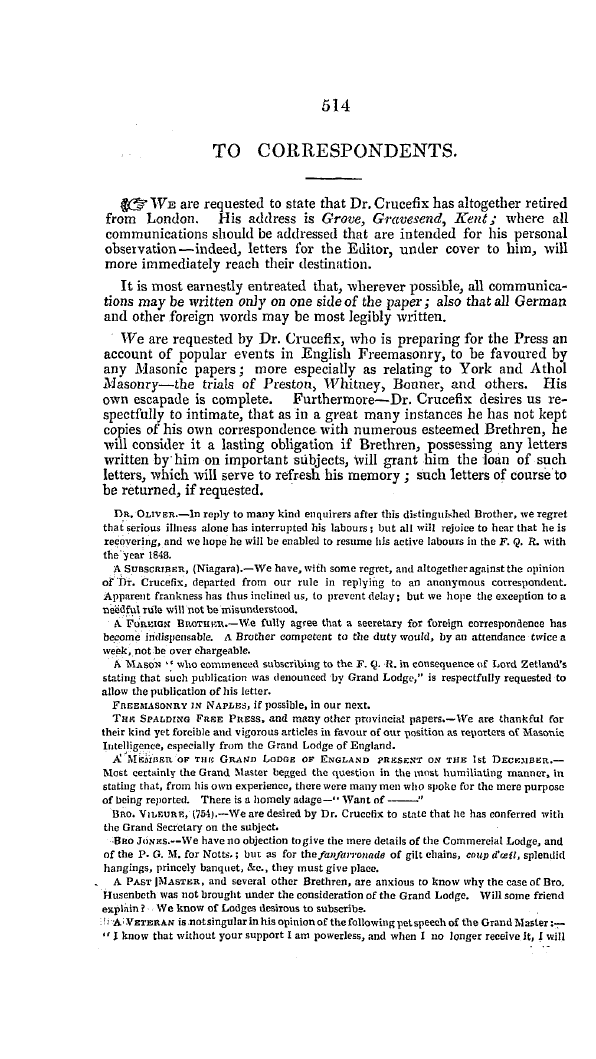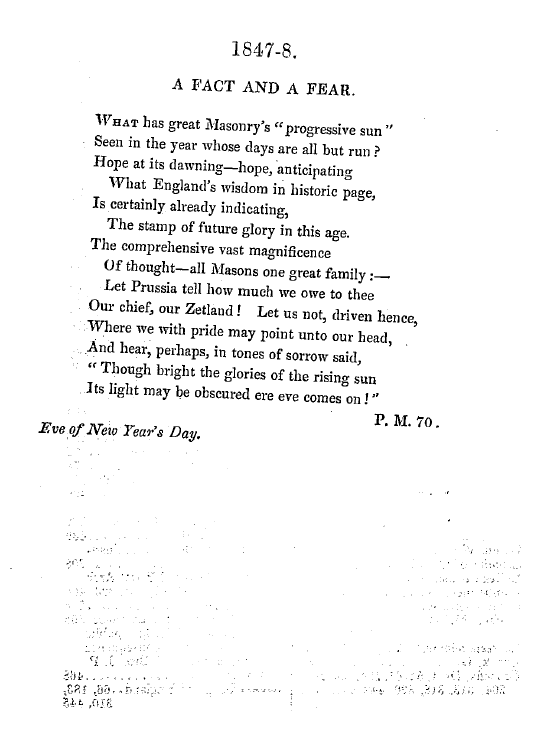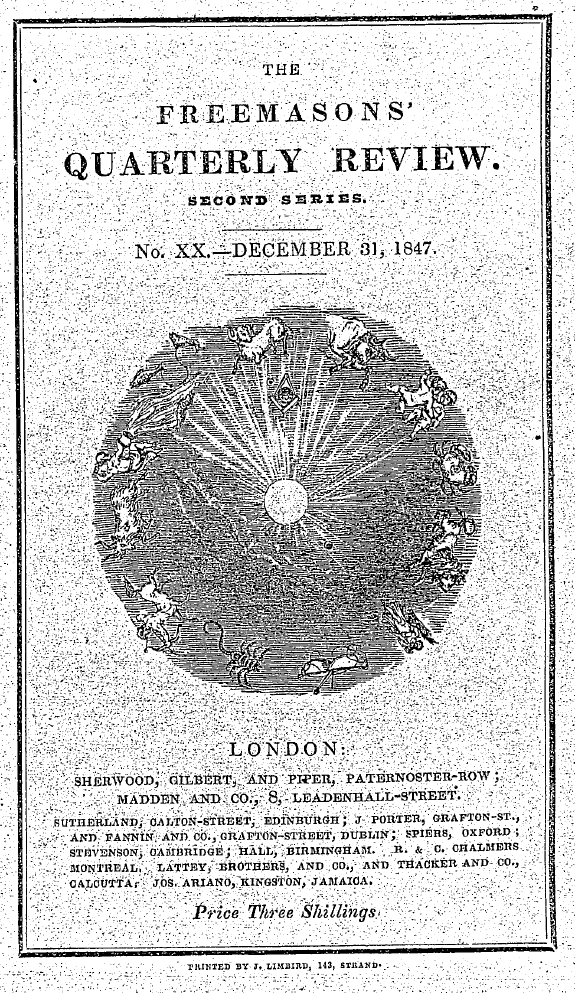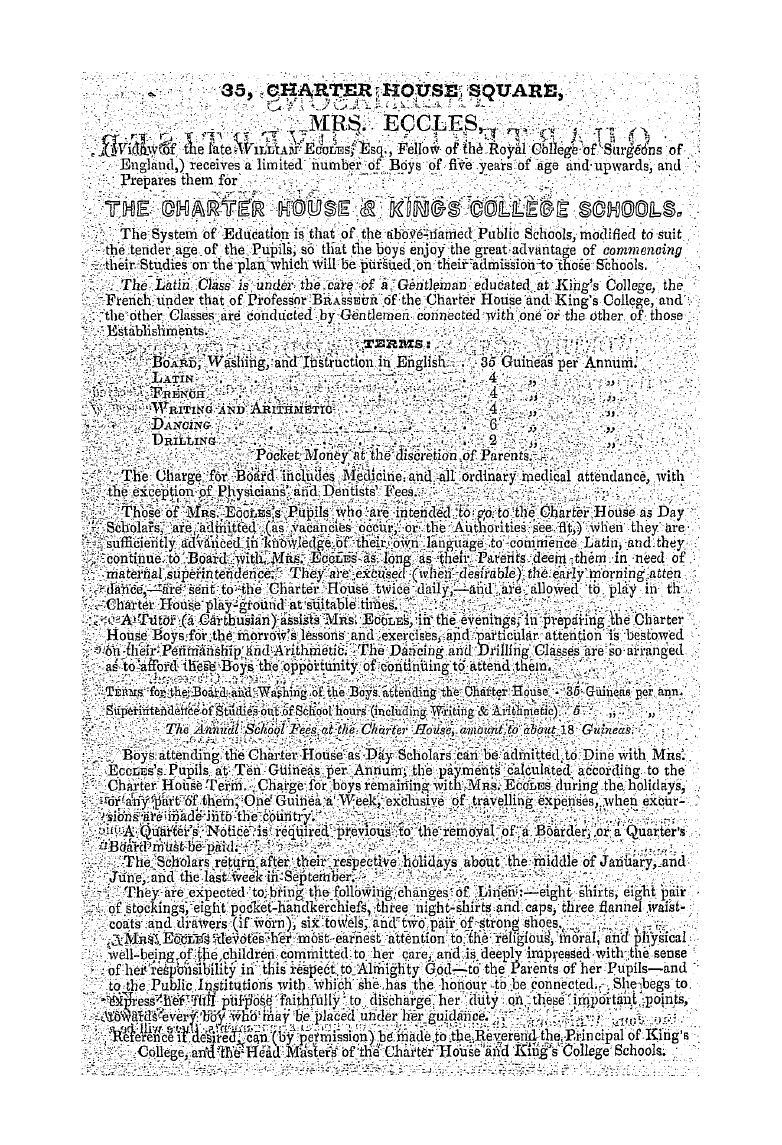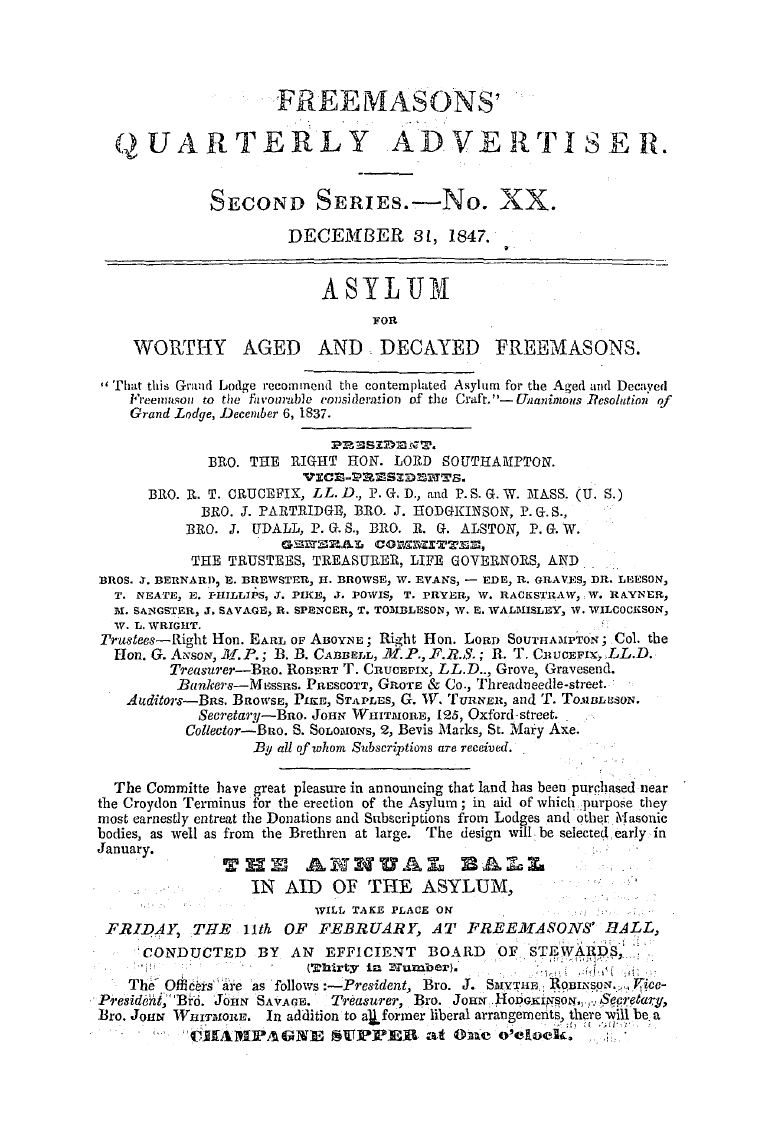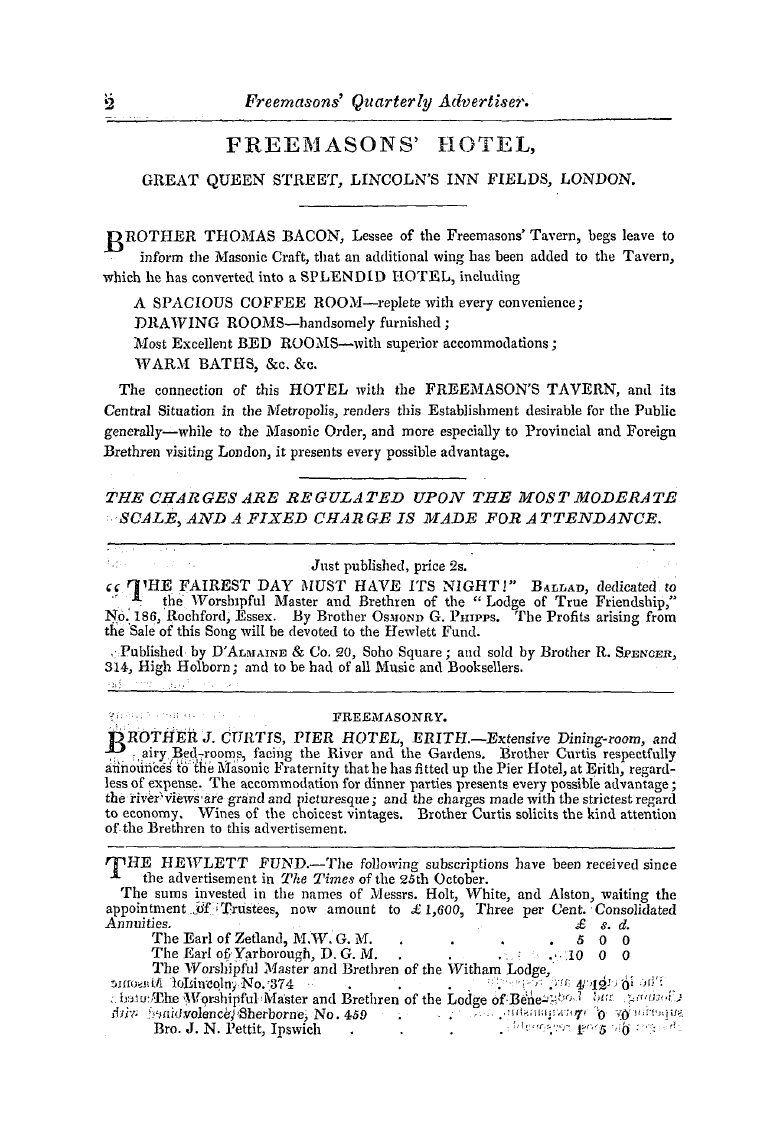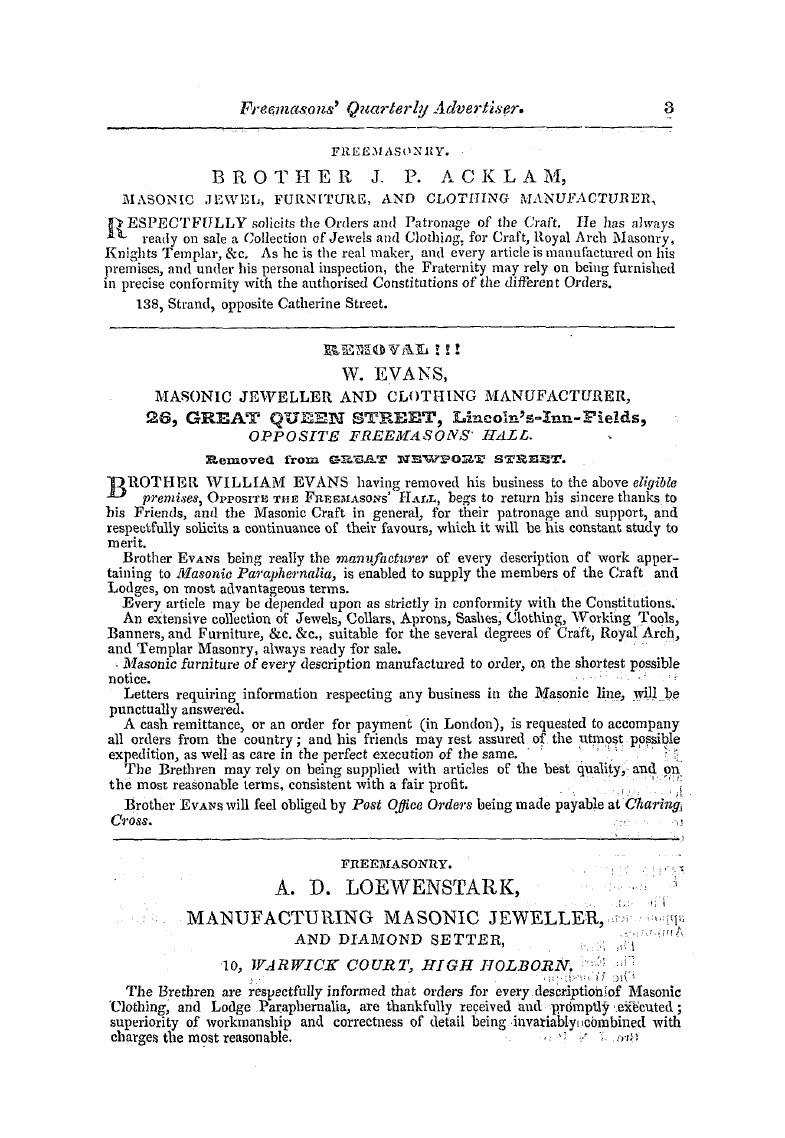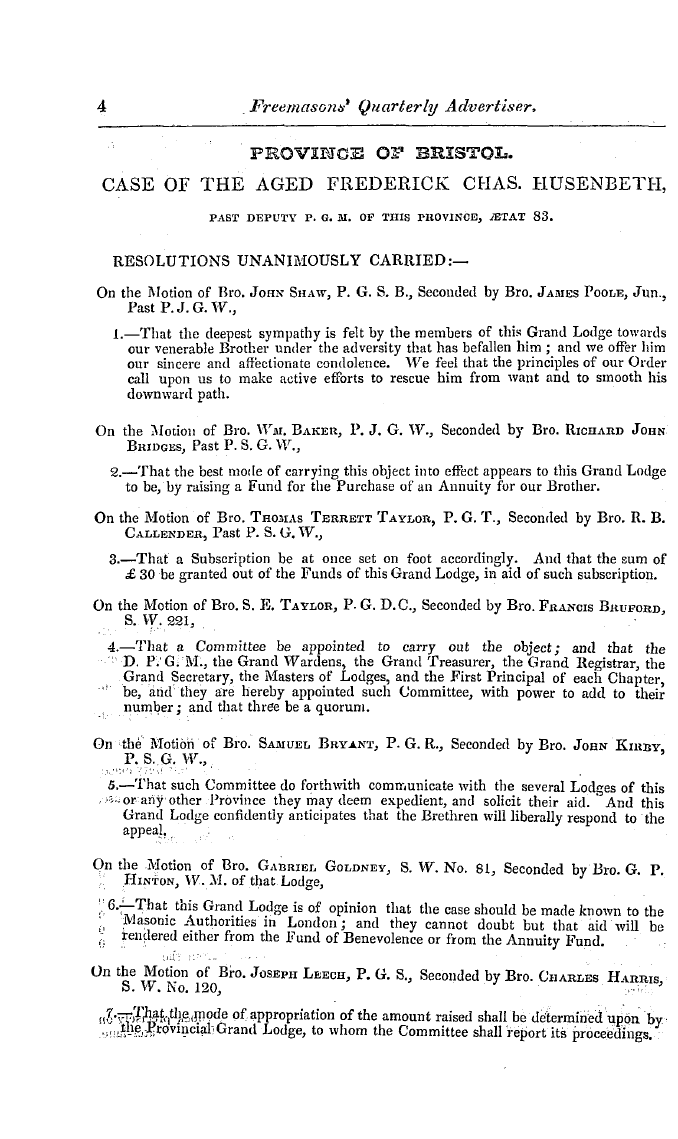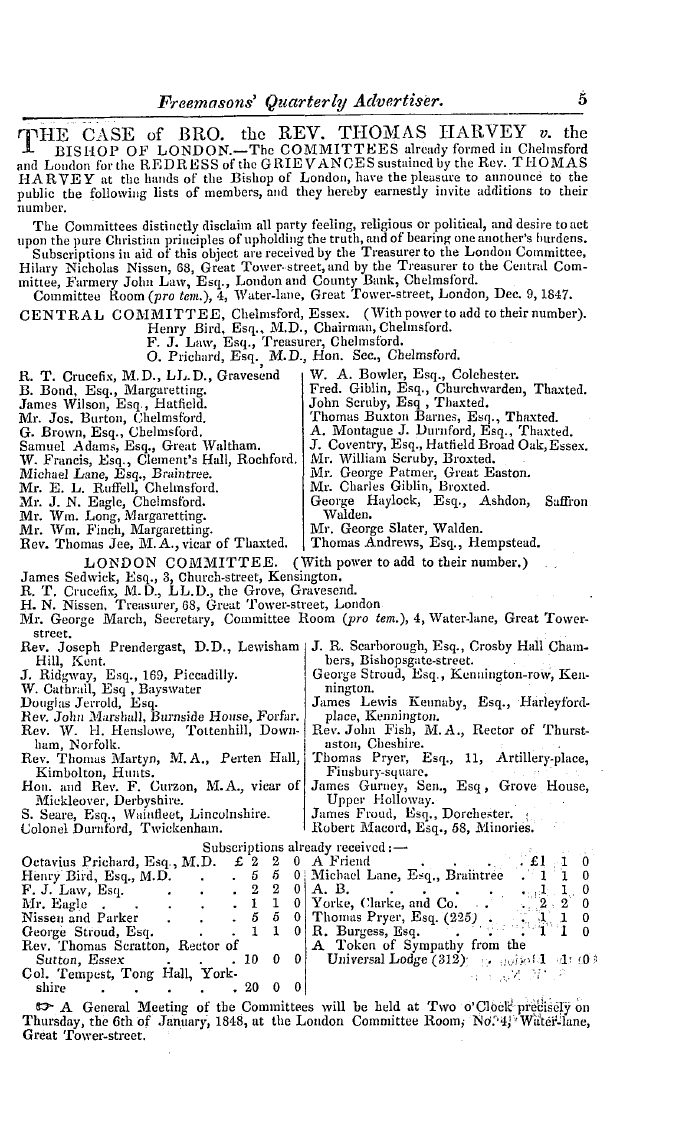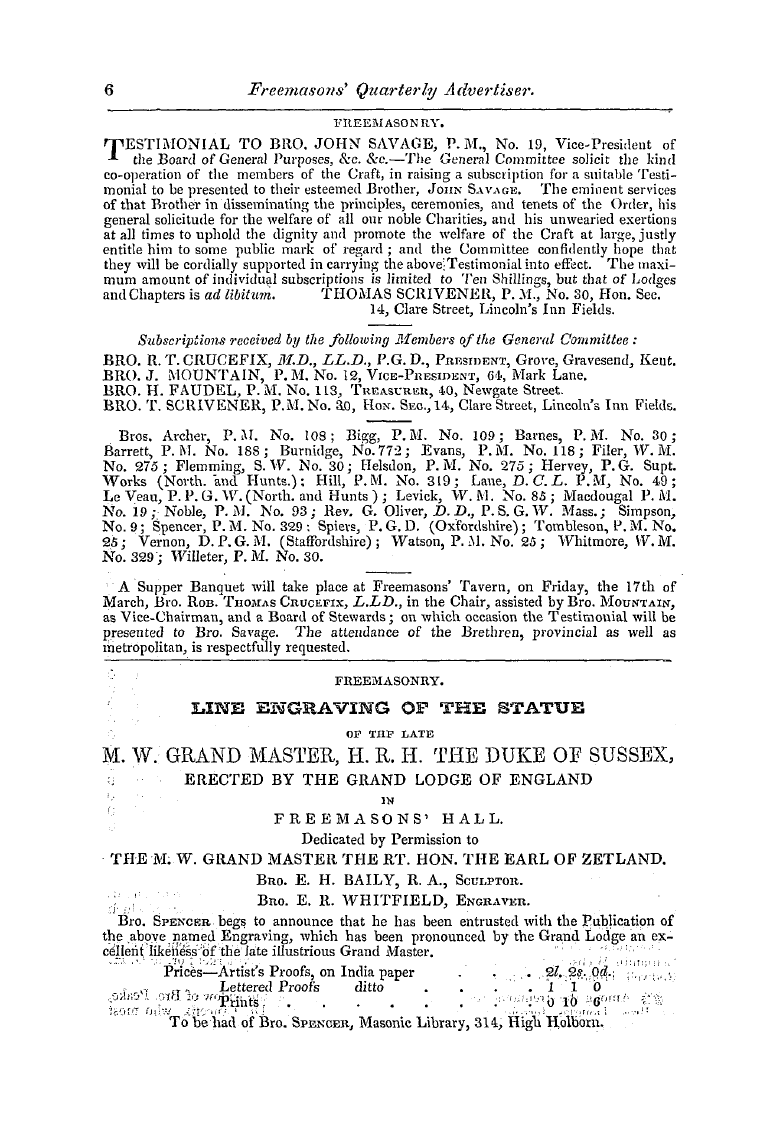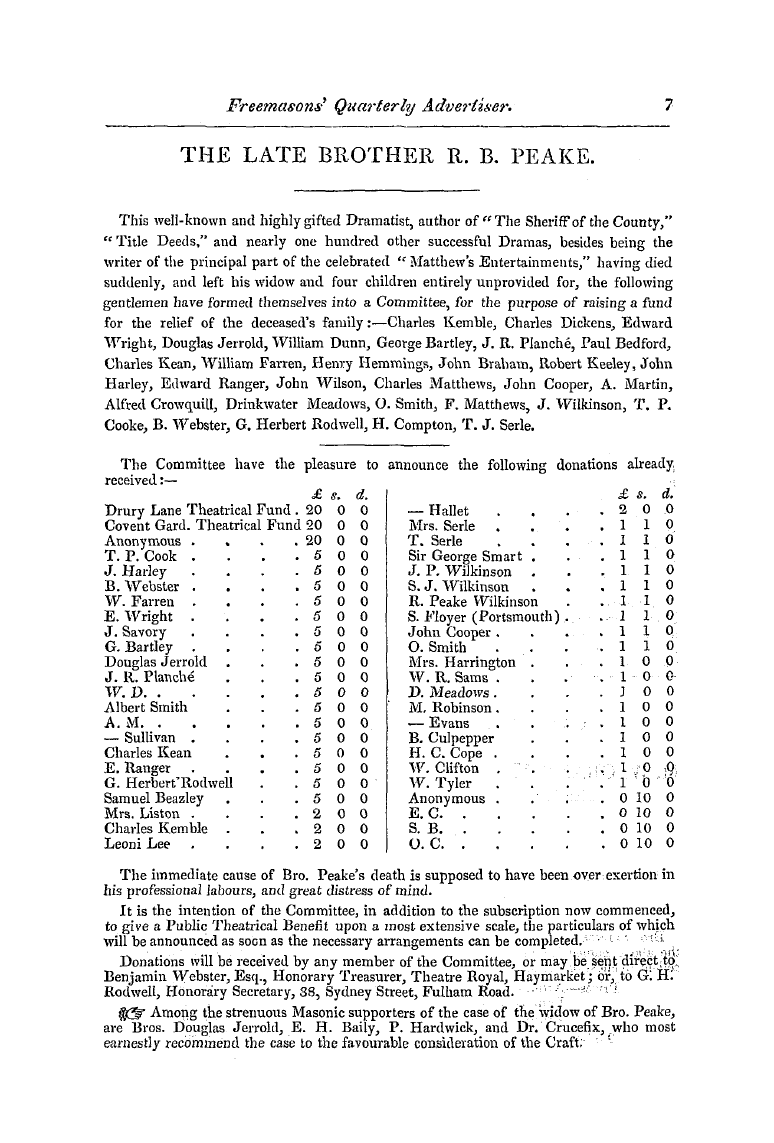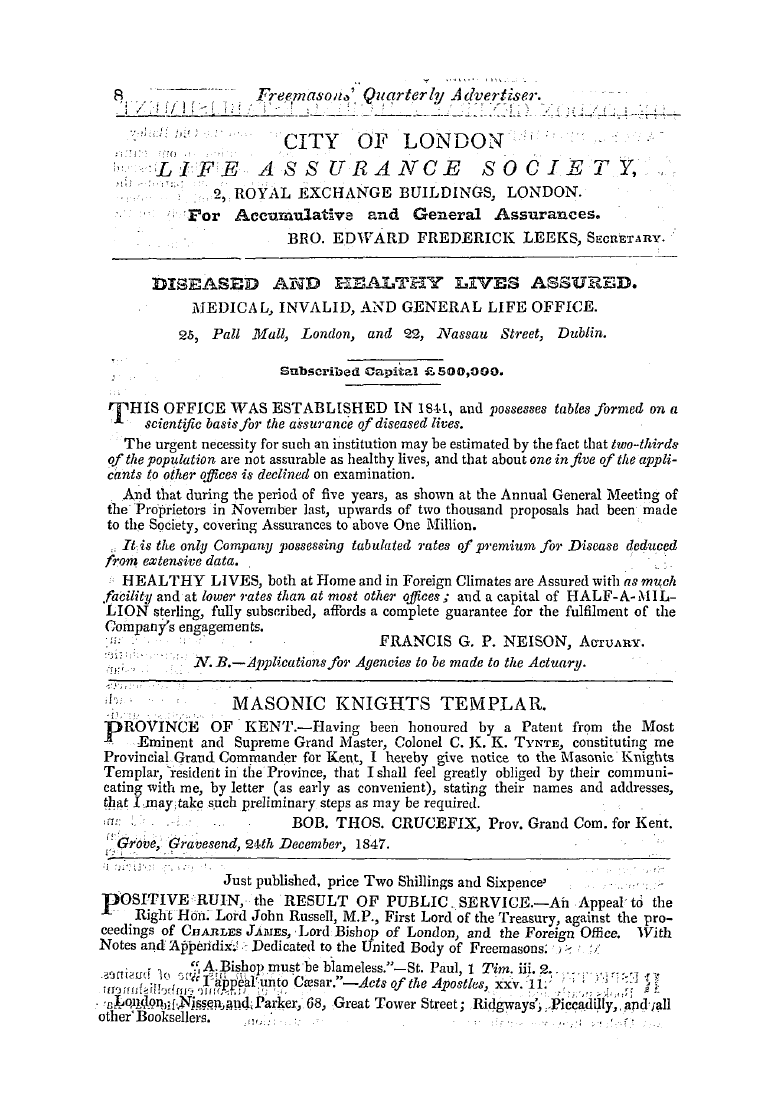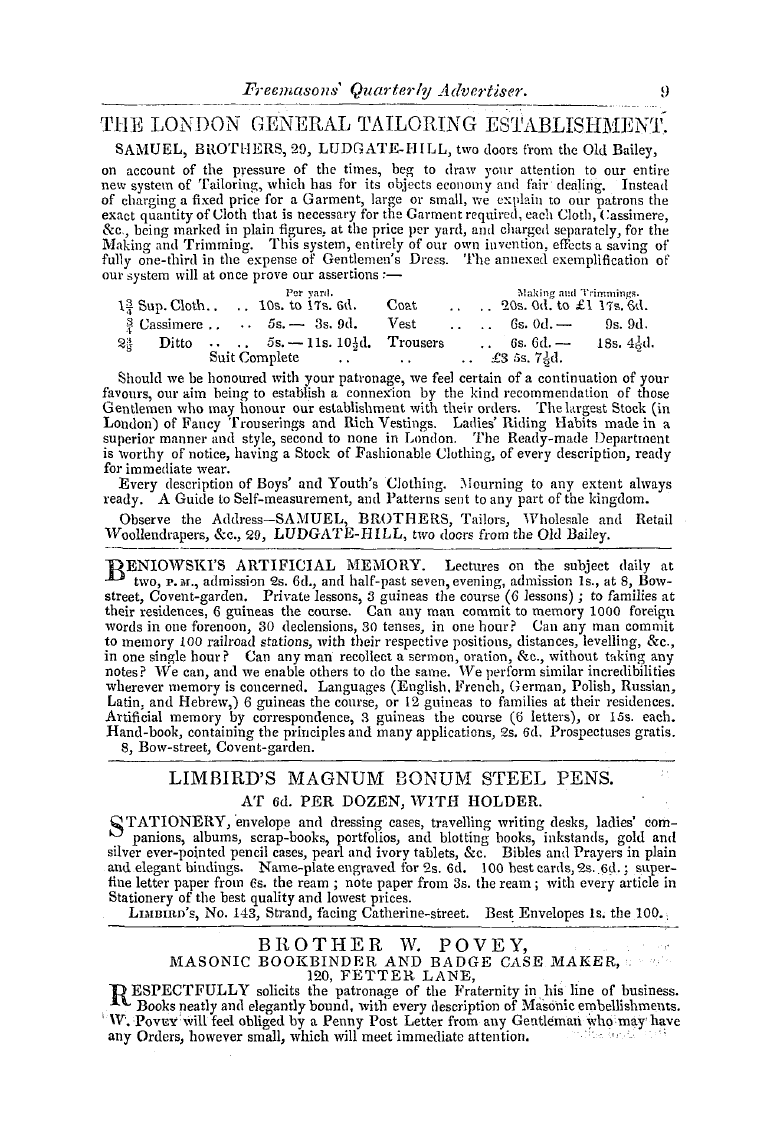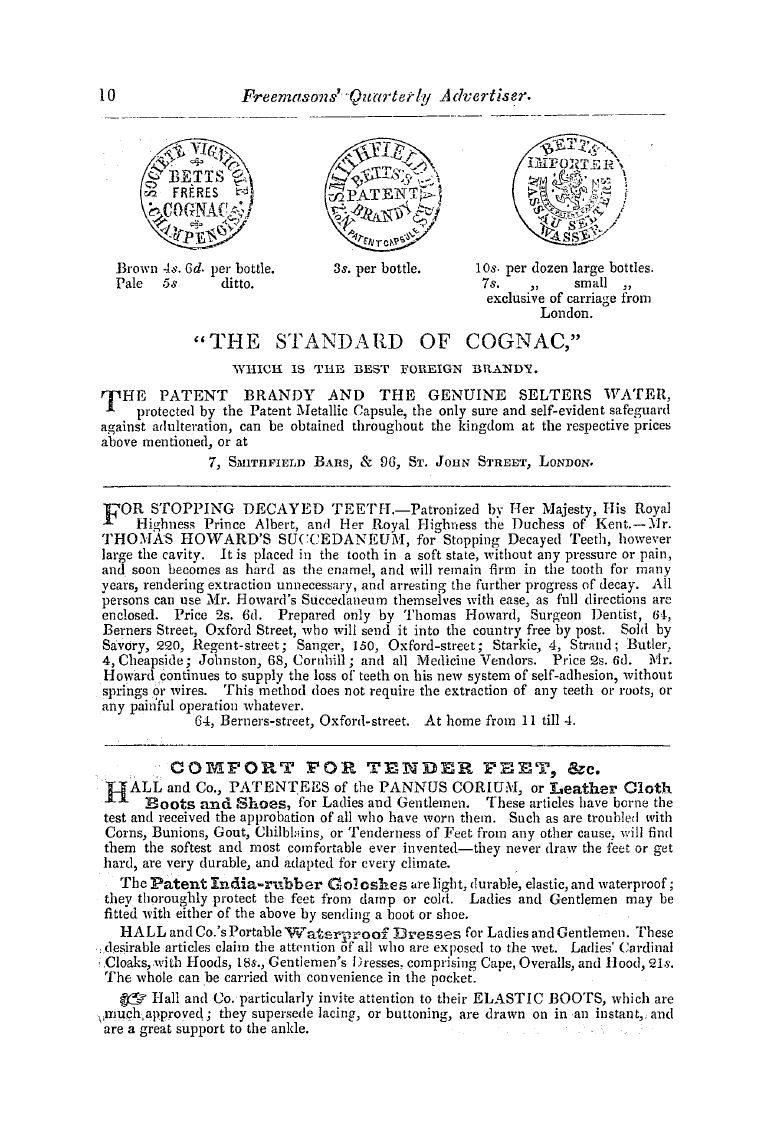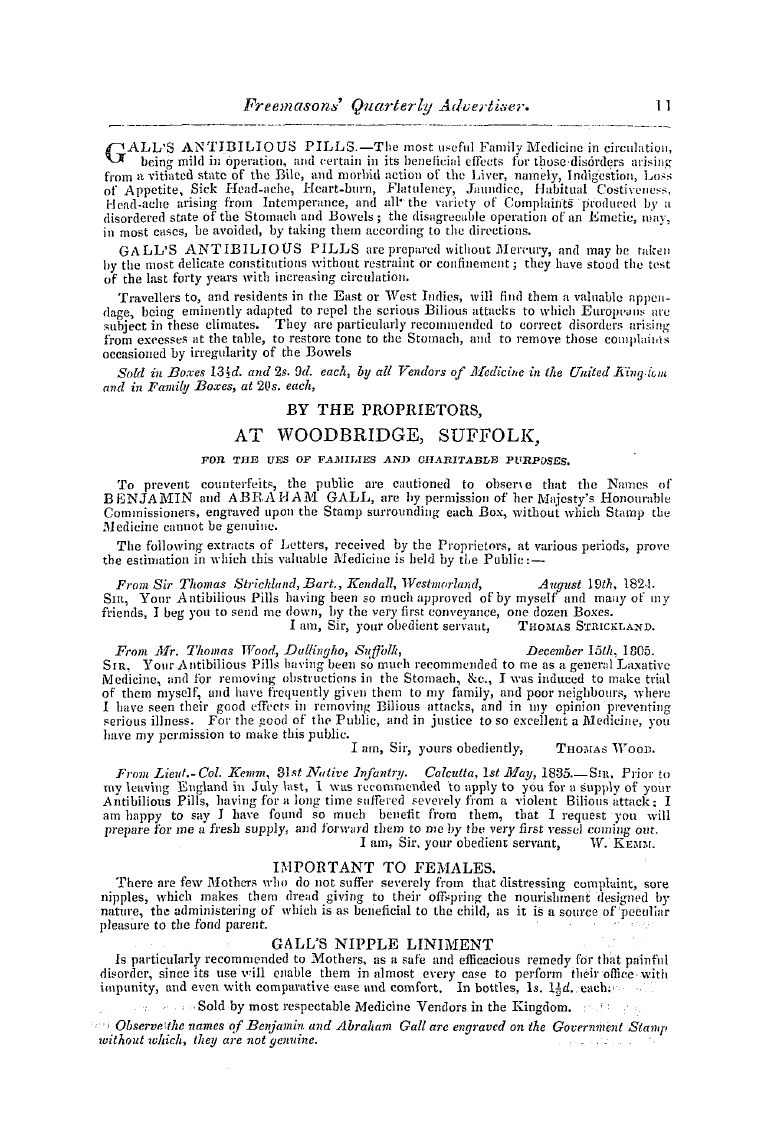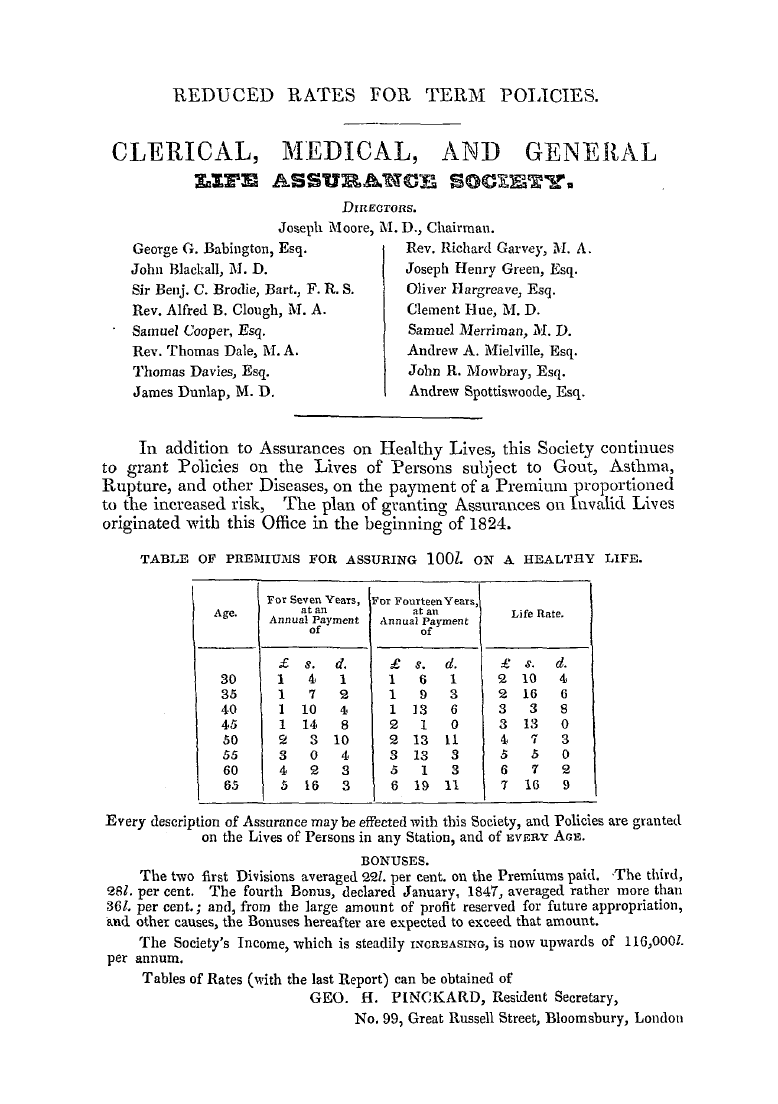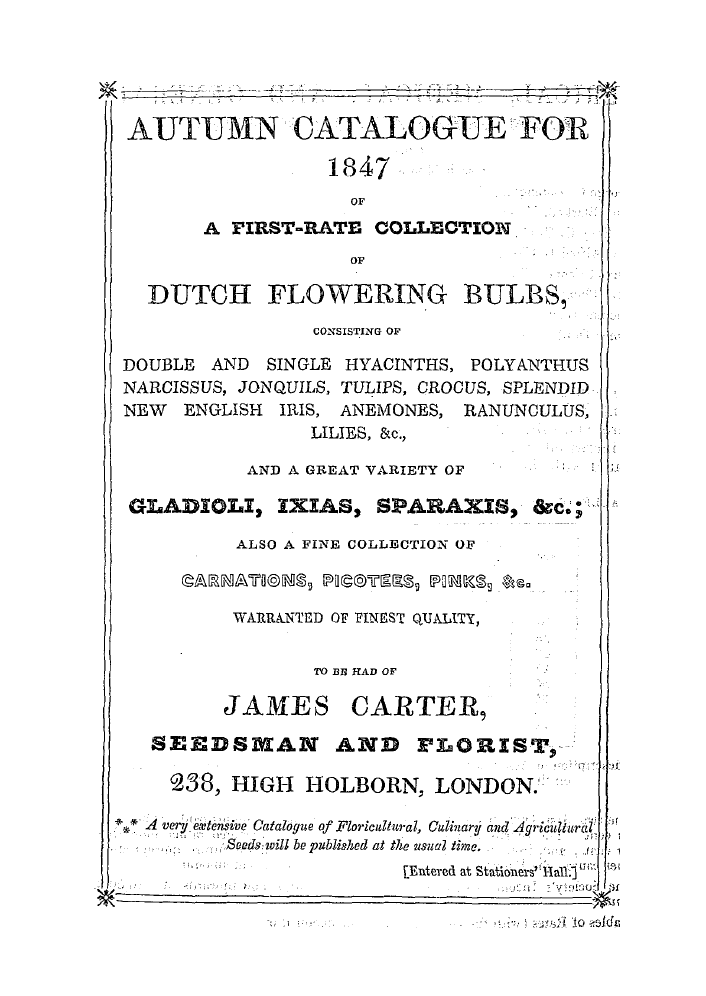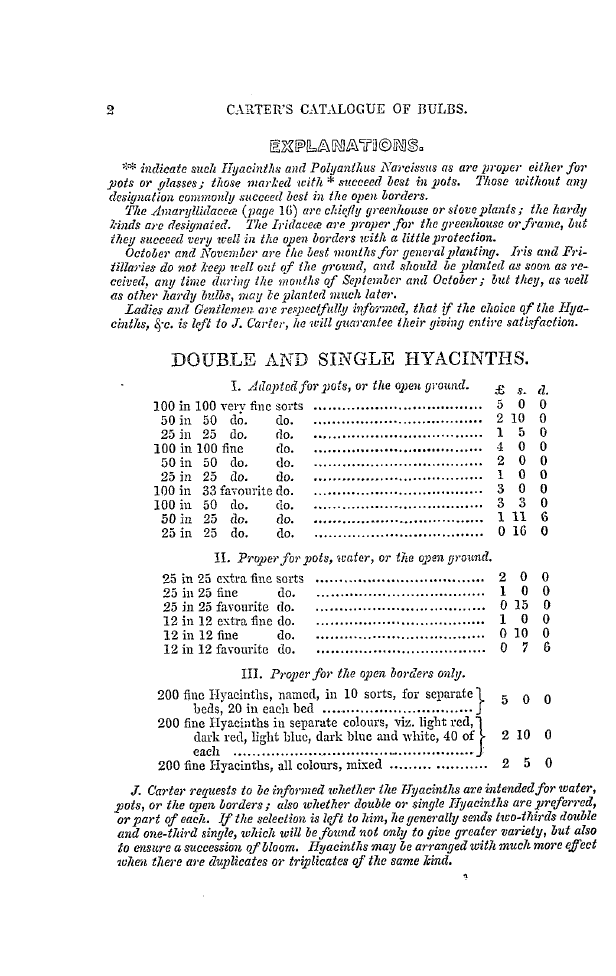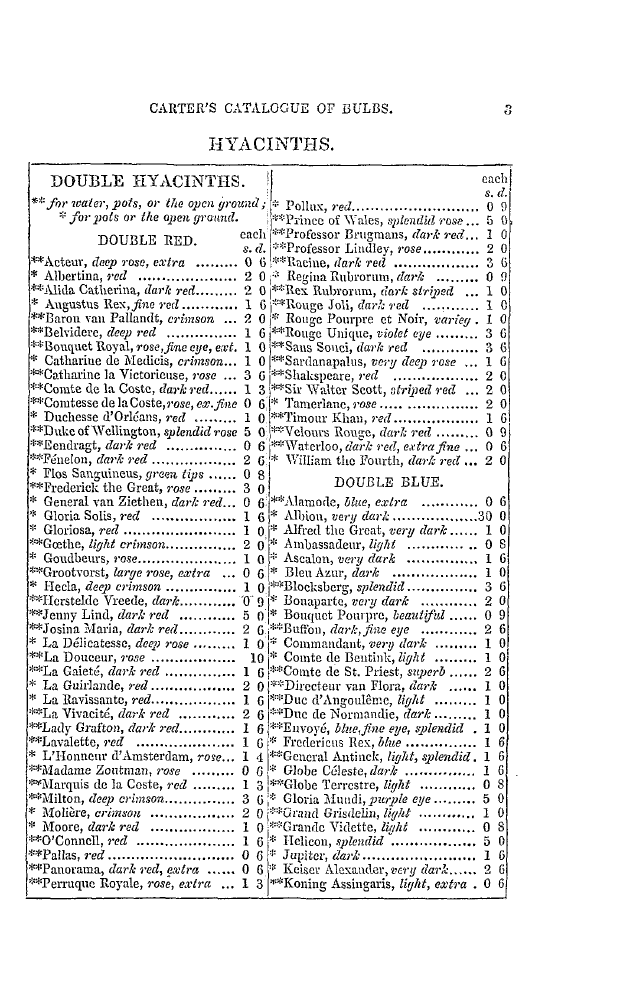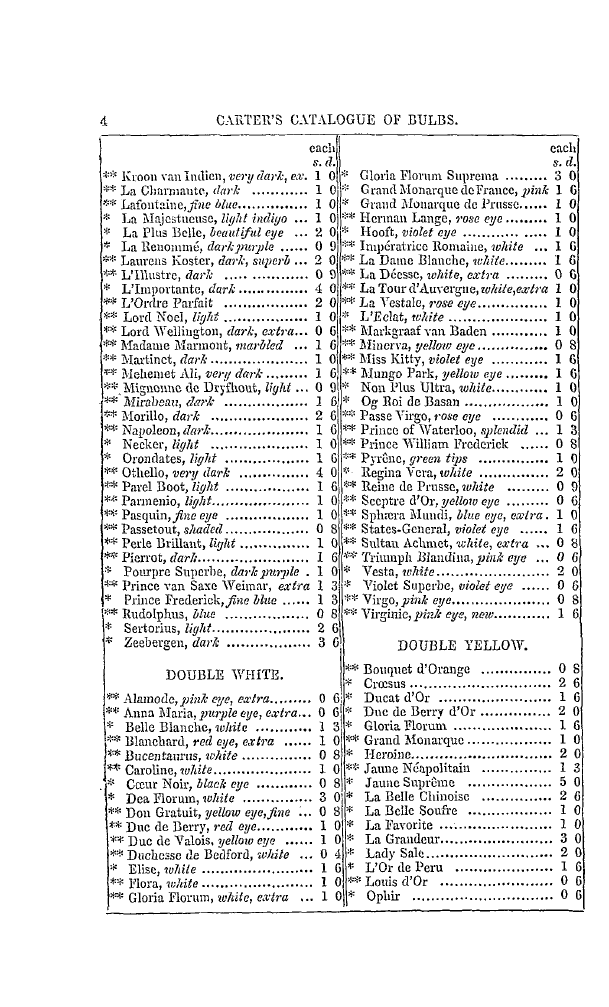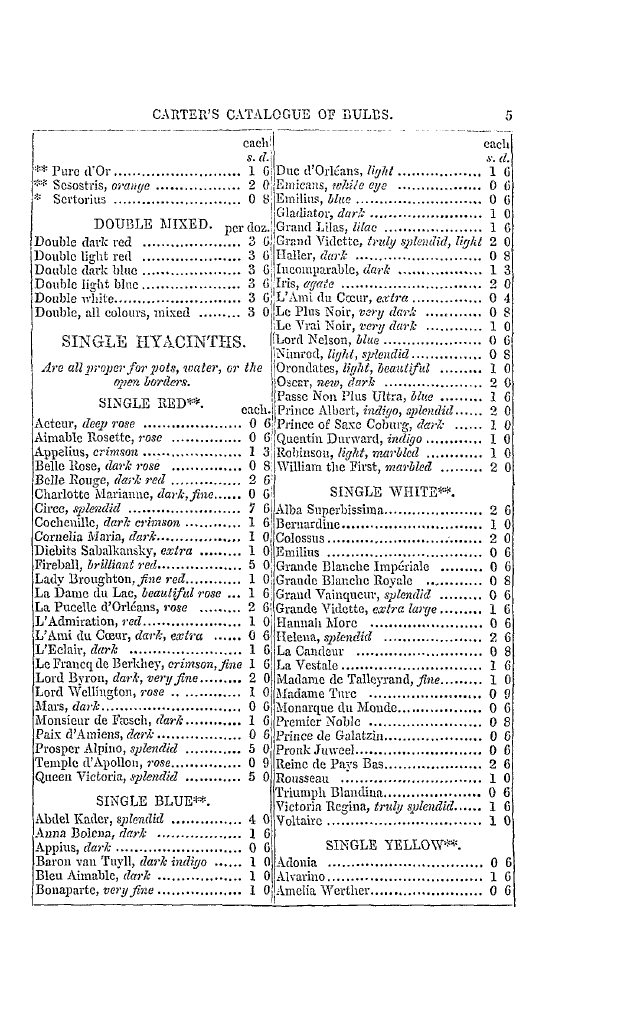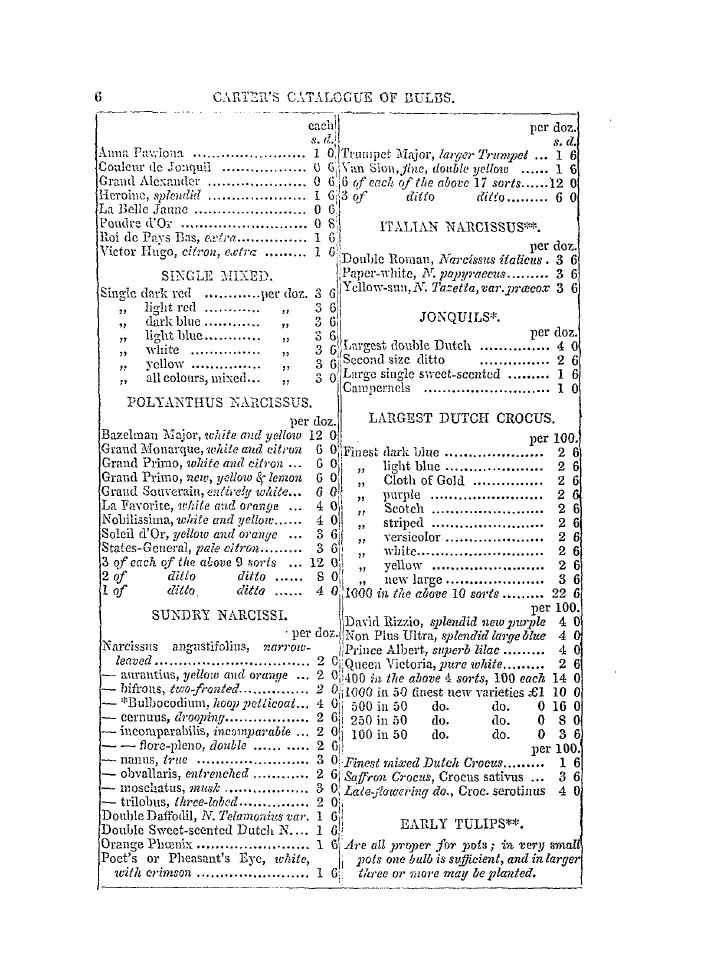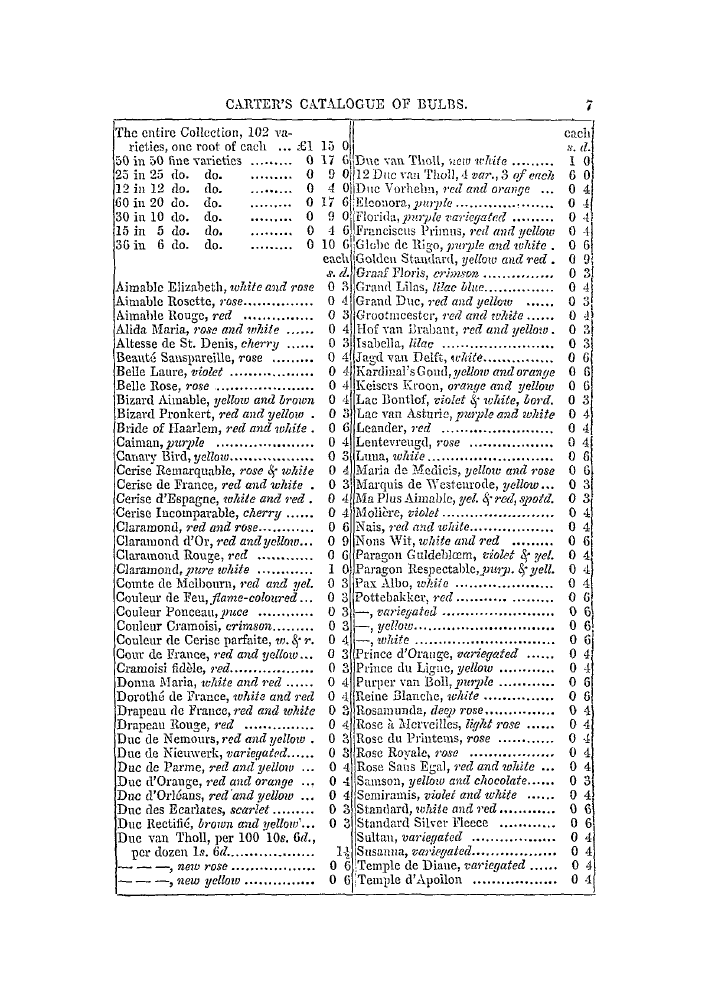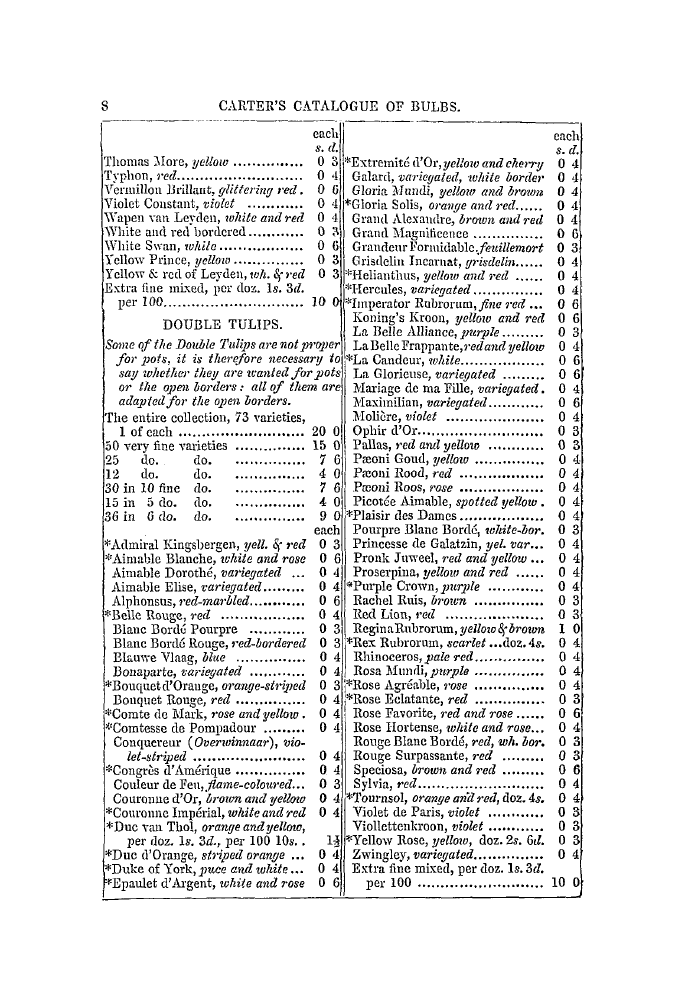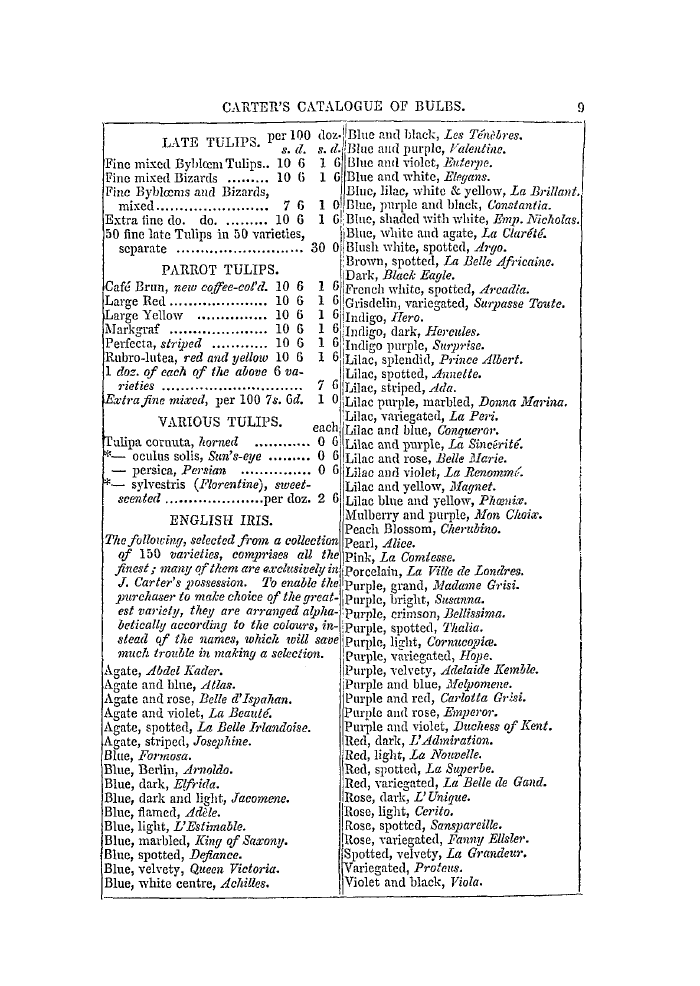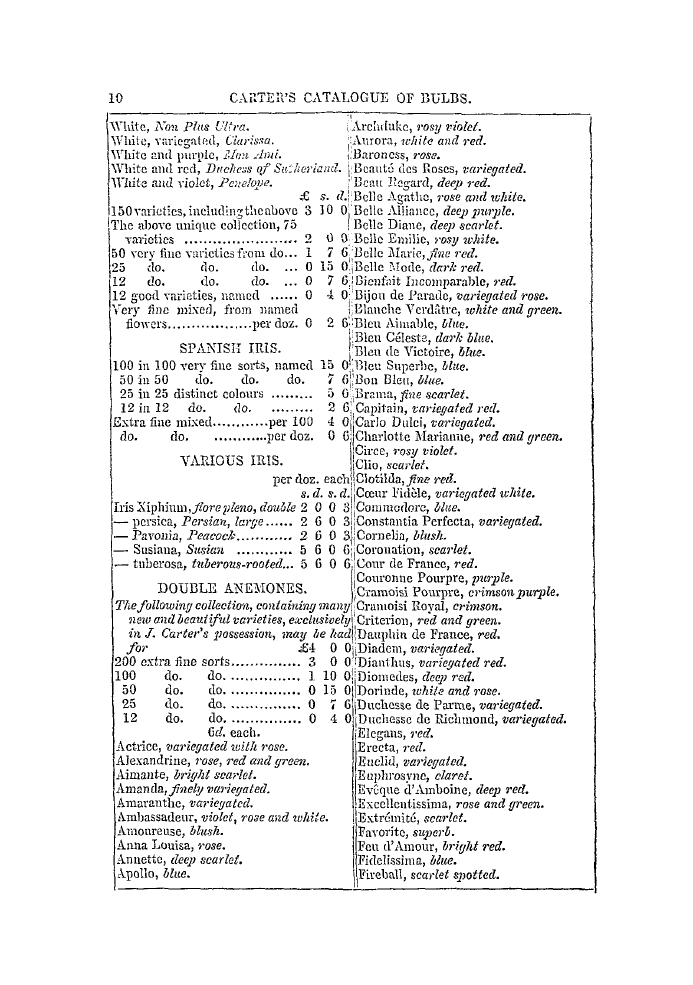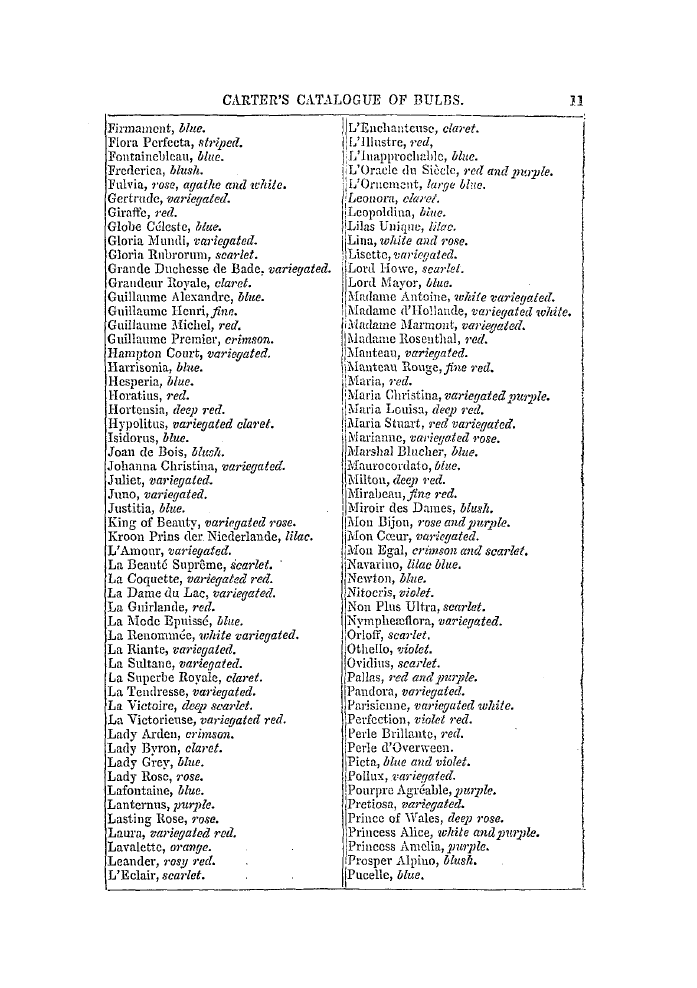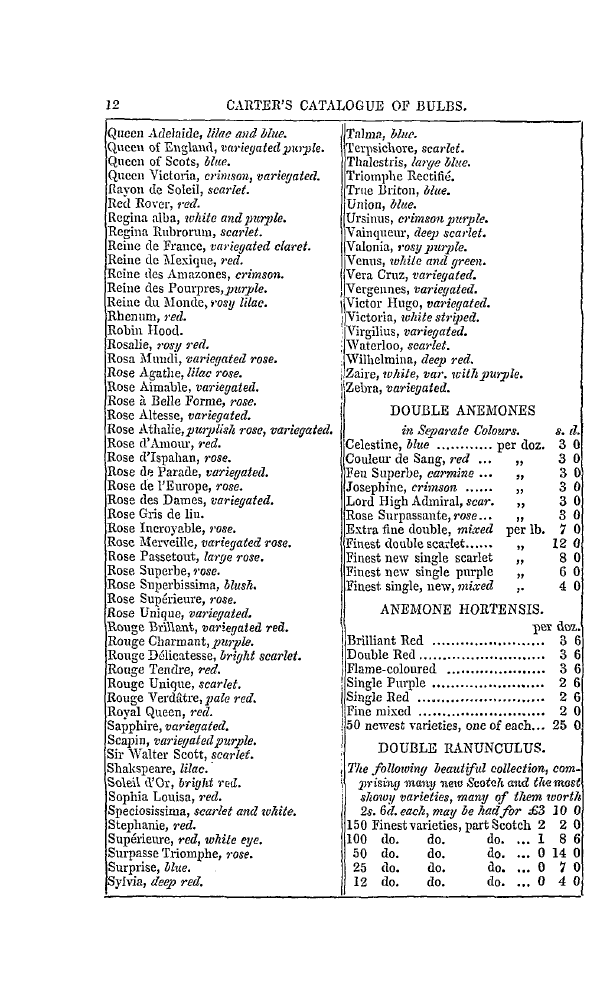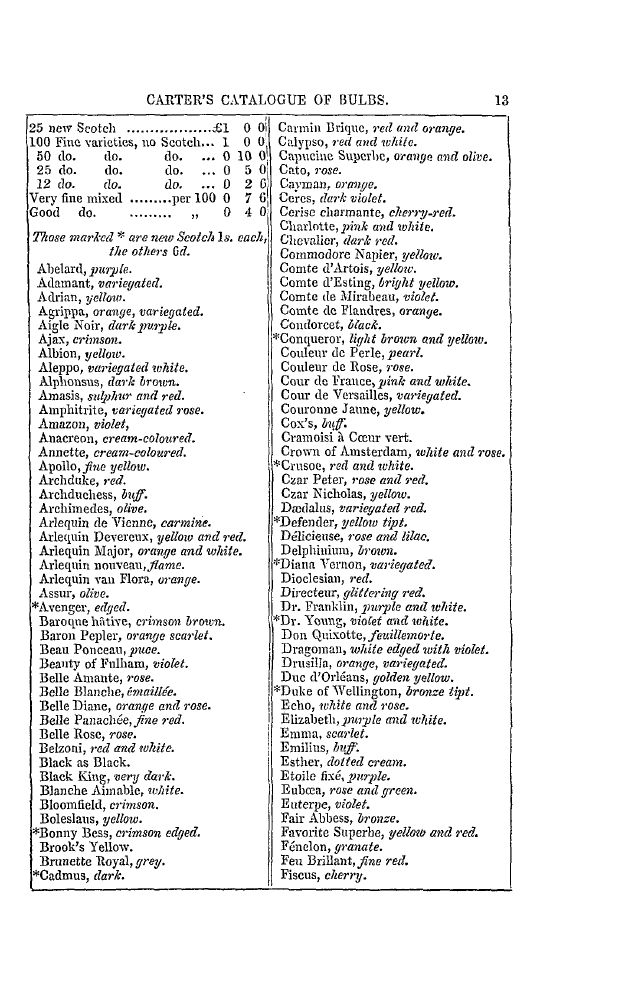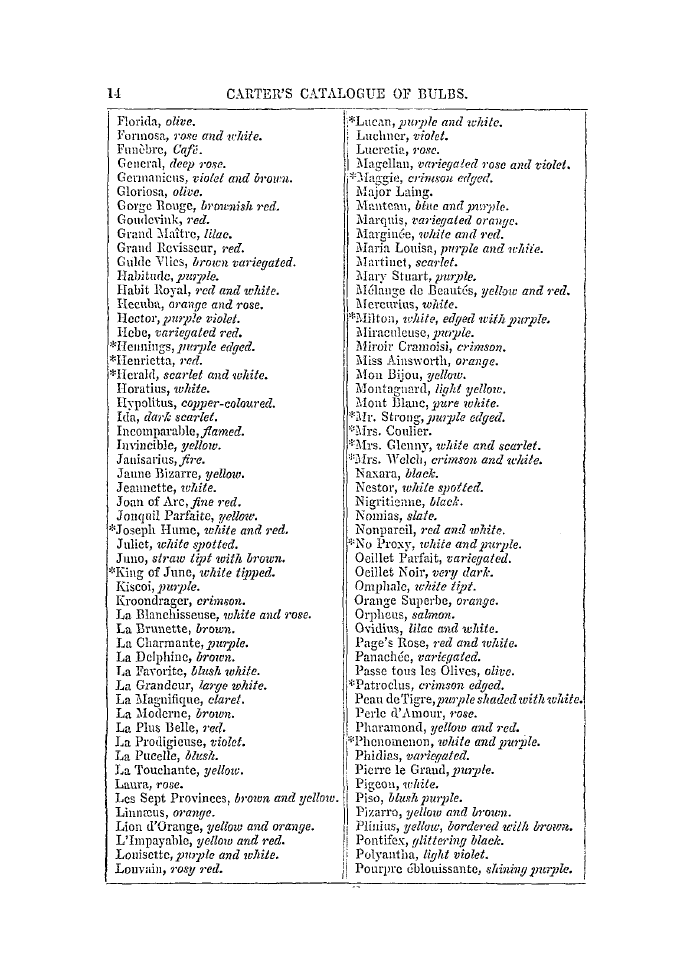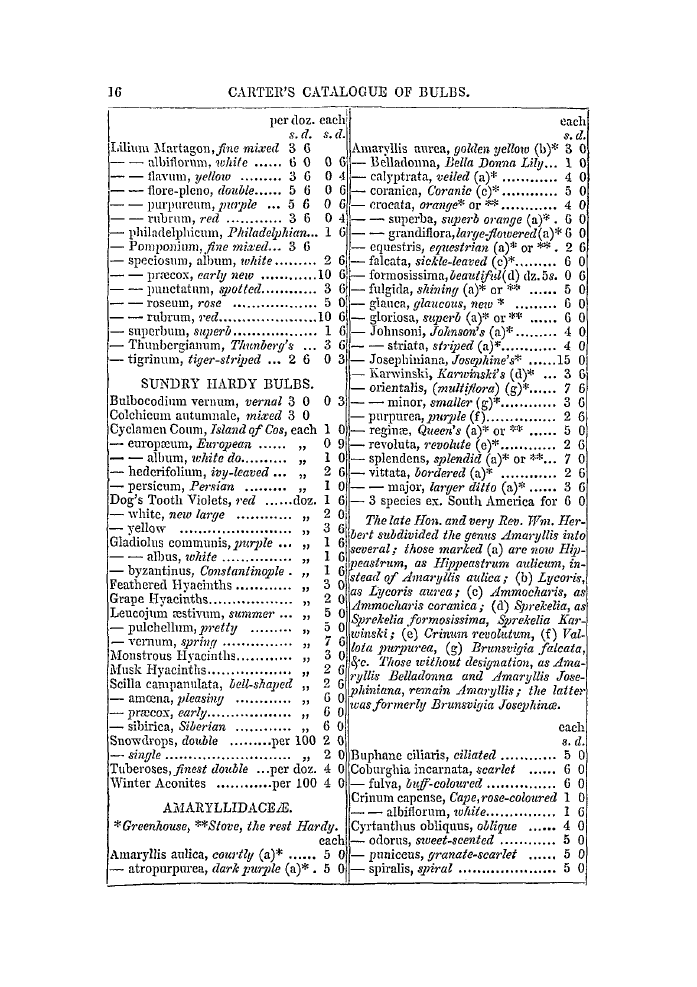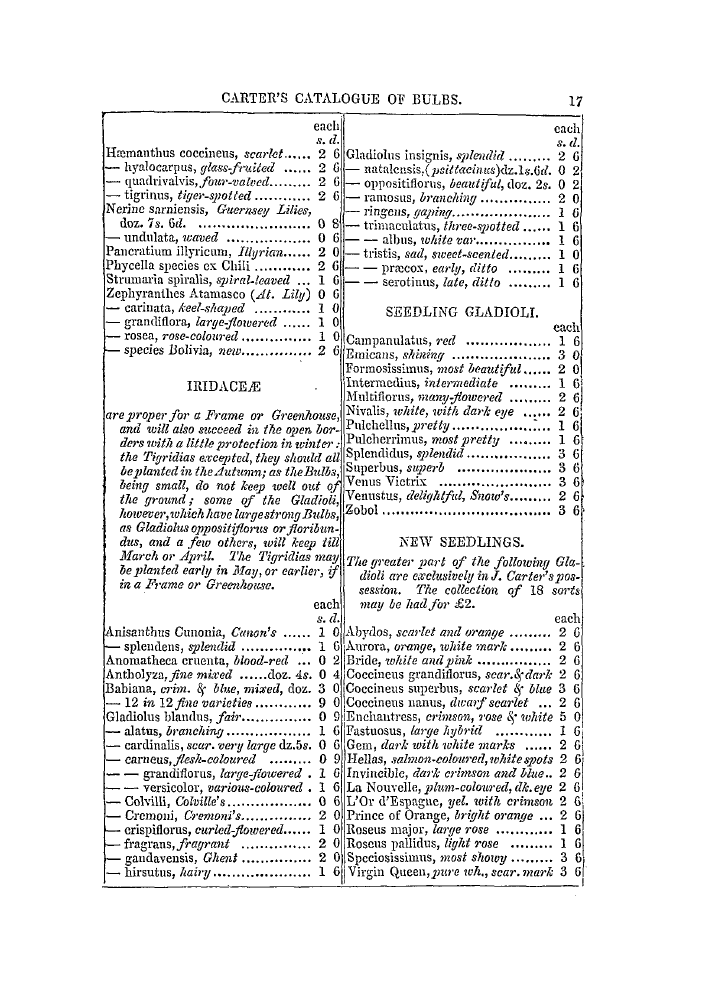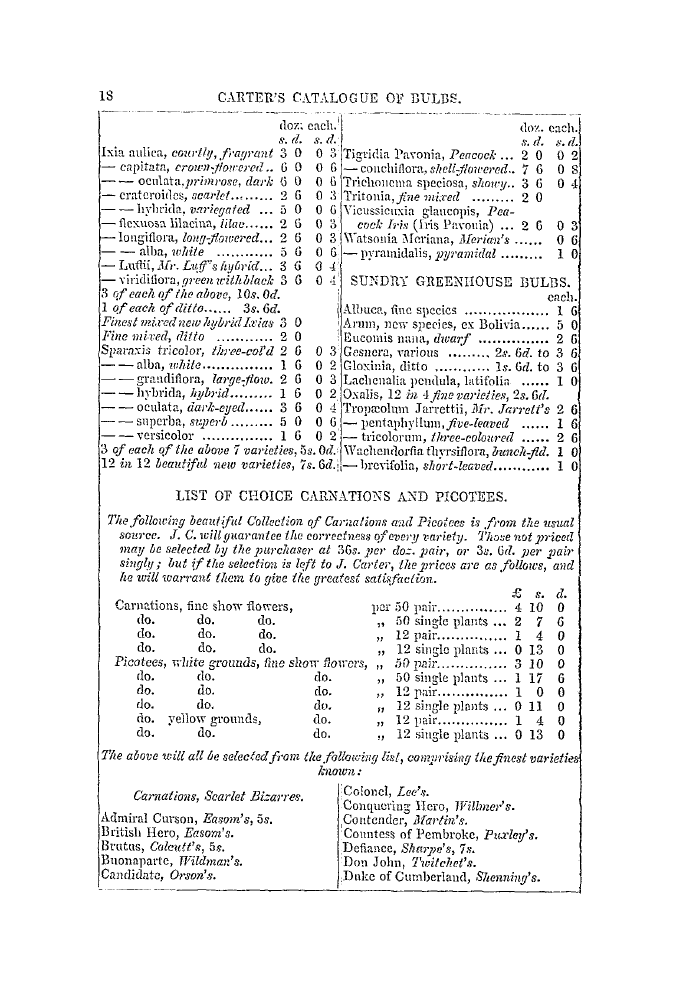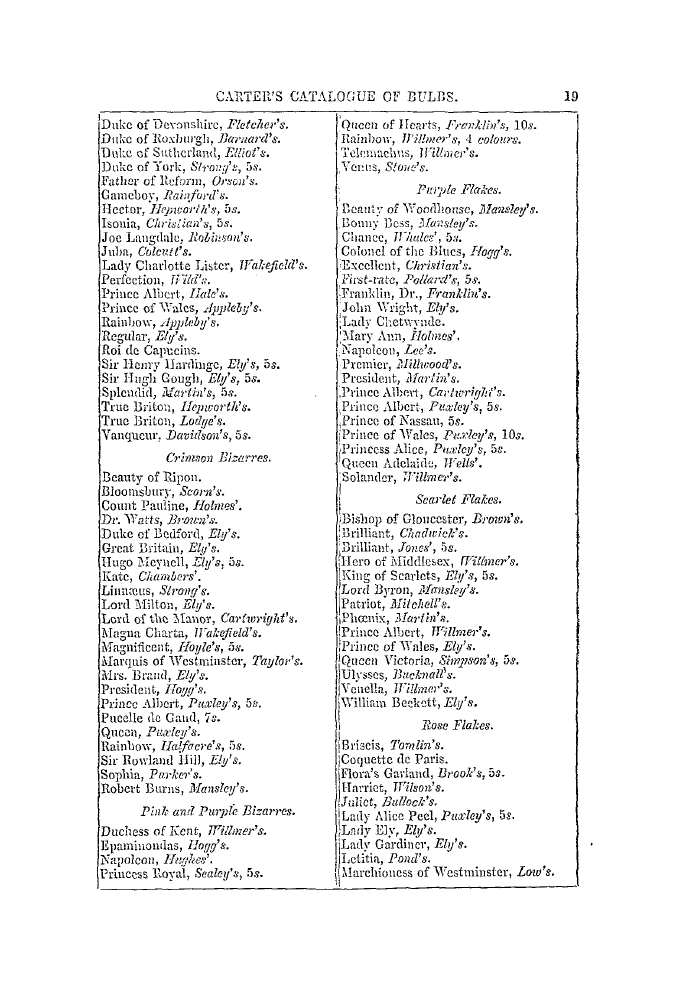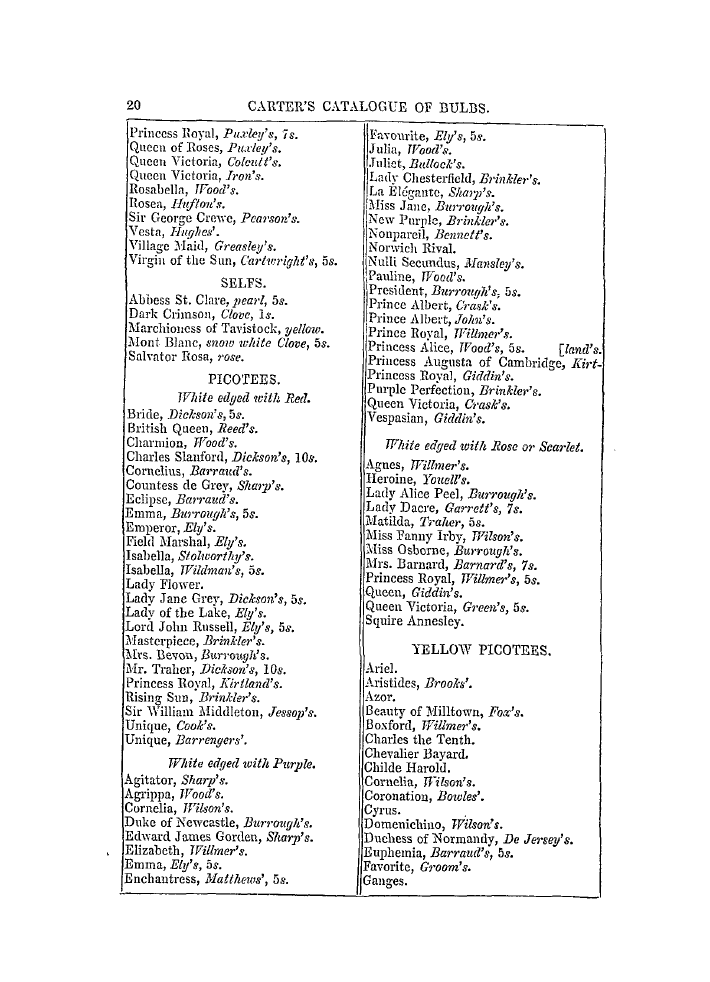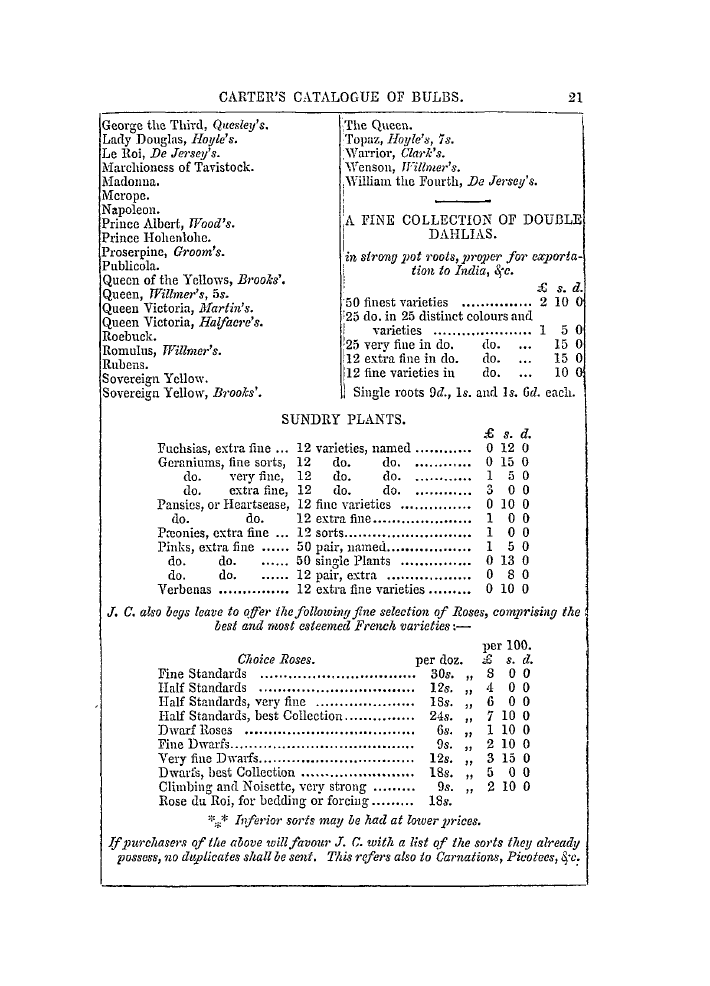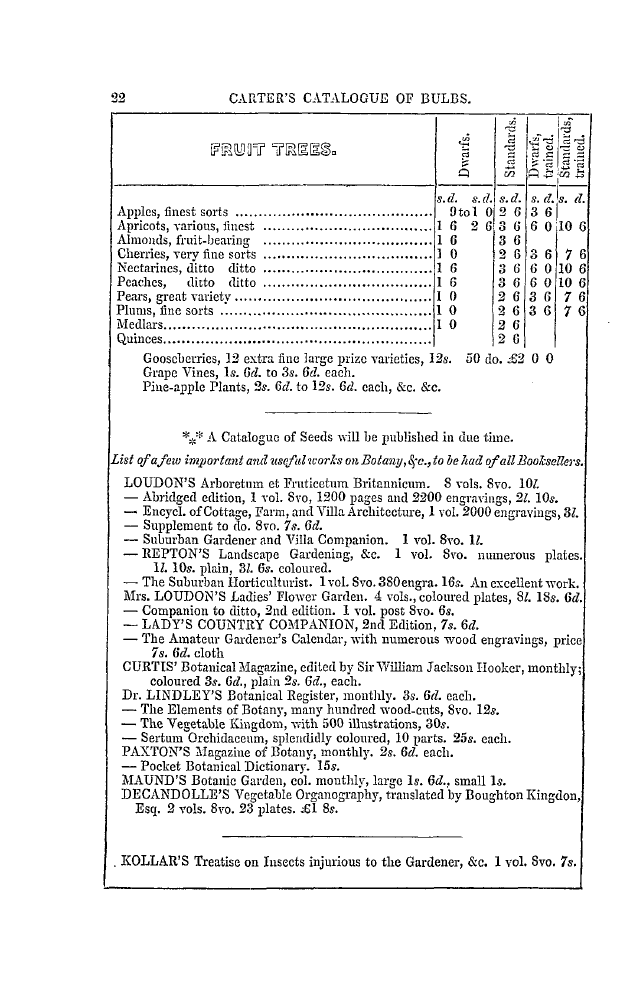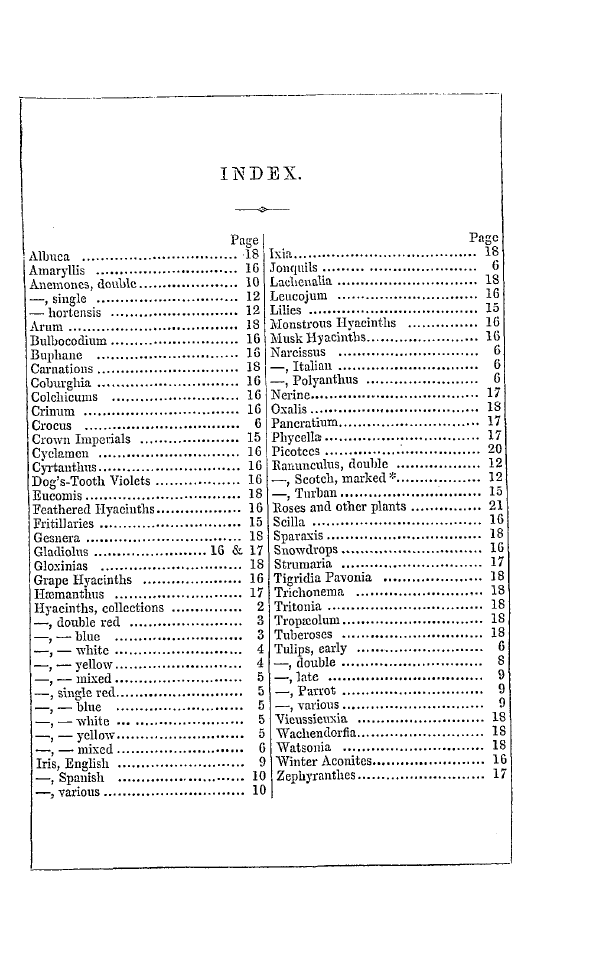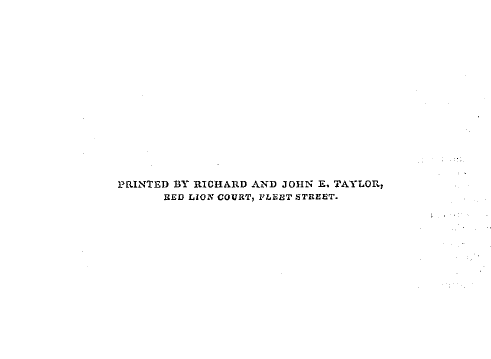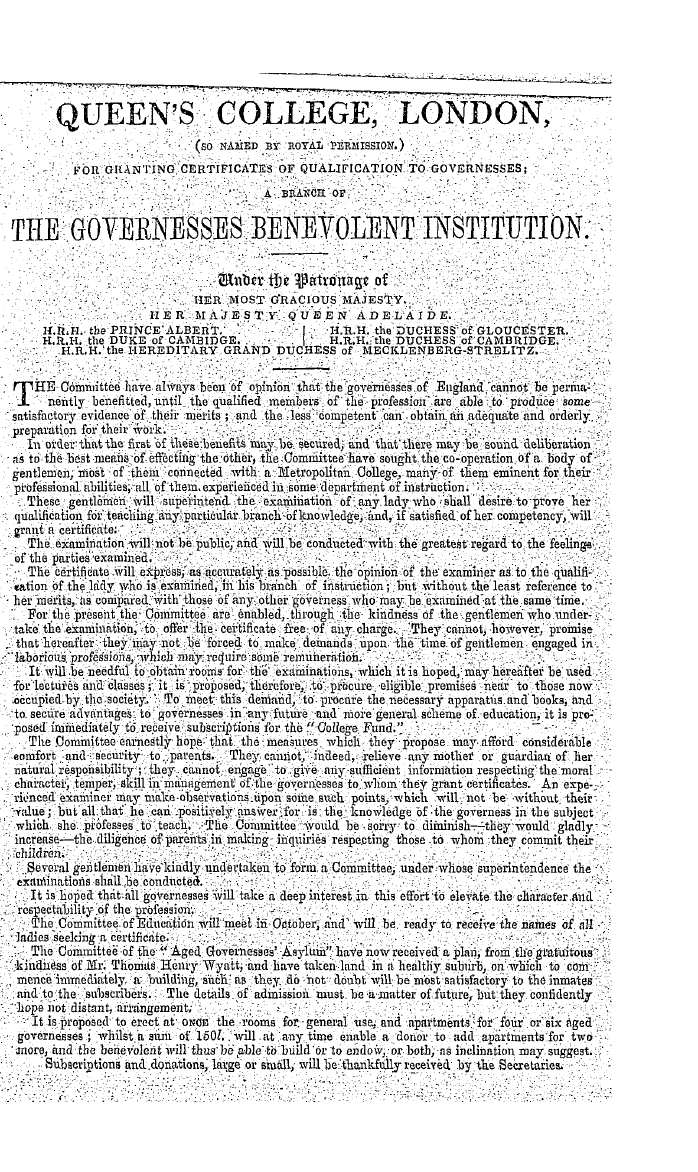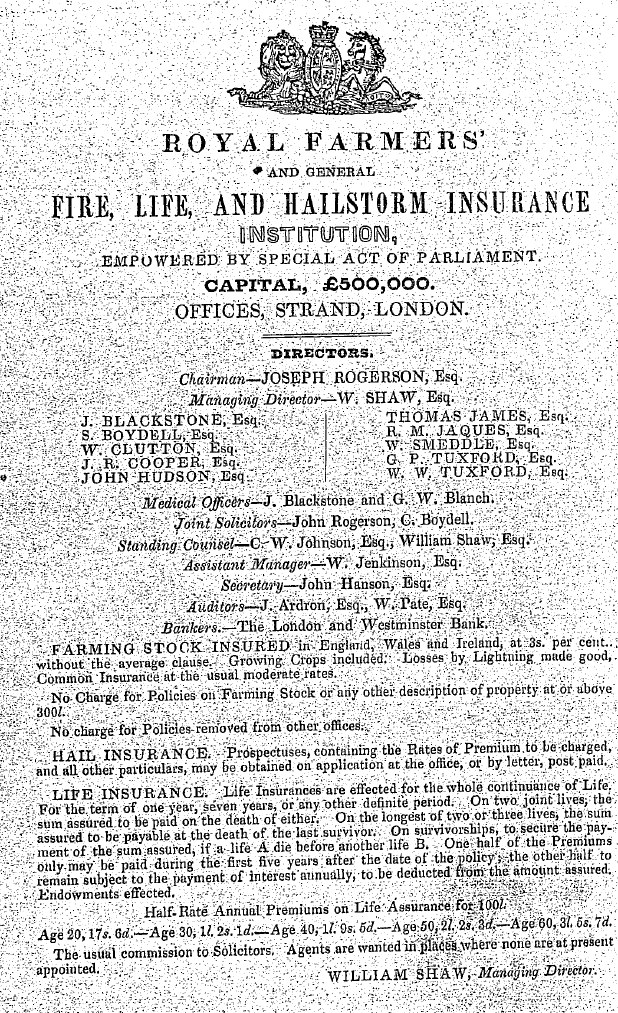-
Articles/Ads
Article ON THE STUDY OF MASONIC ANTIQUITIES. ← Page 15 of 16 →
Note: This text has been automatically extracted via Optical Character Recognition (OCR) software.
On The Study Of Masonic Antiquities.
After this , the newly-initiated candidate was instructed as to the nature and meaning of the various emblems which were arranged around him . The hidden science which was concealed beneath their allegorical veil was gradually revealed to his view ; the names , attributes , and recondite essences of the various deities and symbols which he saw sculptured around him were fully unfolded , and he received a clear elucidation of all that had before appeared dark and mysterious . The mythological and
symbolical figures which every where abounded were shown to be " emblems of wisdom , strength , and beauty , prudence , temperance , fortitude , and justice , and every other commendable virtue . " After his initiation the candidate was allowed to marry and bring up his family , and his third probation commenced when his children were capable of providing for themselves . He then retired from active life , and occupied his time in prayer , austerities , and daily sacrifices . From
this point he was deemed to be twice born , and considered as a being of a superior class . The fourth degree was believed to impart an extreme portion of merit to the sage possessing sufficient courage to undertake the performance of its duties . Being formally installed , he was solemnly bound to the observance of various penances , severe duties , and bodily mortifications ; to renounce the world and all his former connections , and exercise himself exclusively in incessant prayer and contemplation . The strict performance of these duties was believed capable of transforming him into the Divine nature , and secure to him a residence among the celestial
gods . Such is a general outline of the initiatory rites practised in ancient India at the time of the formation of the temples of Elora . It is evident that the religious rites had then , in some measure , departed from the simplicity and purity of their pristine references , and by such deviation , increased by error and misconception , paved the way for subsequent superstition ; yet in these rites we trace the elements of primal truths . The worshiof the Tri-une deity was inculcatedand the mind
p , gra dually trained to the practice of virtue in its severest sense ; and though the excess of religious zeal in the performance of the various austerities and mortifications may be considered as a species of infatuation , it is impossible to regard without interest the spectacle of a human being , disregarding the pomps and vanities , the pleasures and allurements of the world , living only for a life to come , and endeavouring to qualify himself for heavenly communion , by casting aside all earthly pleasures ,
and devoting himself to incessant prayer and contemplation . The origin of monastic life , in its strictest purity , is here sufficiently apparent . The ancient sages and gymnosophists of India were the first to impart to the philosophers of other nations the sublime ideas of the existence of a Supreme Being , and the immortality of the soul ; and as in their teaching ( though now enveloped in fables and unintelligible allegories ) we discern a knowledge of the leading facts revealed in the volume of the Sacred Law , it is apparent that their knowledge must have been originally derived from a source at once pure and authentic , however subsequently perverted and debased .
The distinction of caste—that greatest violation of the Masonic principle of universal brotherhood , a system whose pernicious influence has for so many centuries prostrated the energies , and prevented the intellectual development of the Hindoo—presents the most formidable
Note: This text has been automatically extracted via Optical Character Recognition (OCR) software.
On The Study Of Masonic Antiquities.
After this , the newly-initiated candidate was instructed as to the nature and meaning of the various emblems which were arranged around him . The hidden science which was concealed beneath their allegorical veil was gradually revealed to his view ; the names , attributes , and recondite essences of the various deities and symbols which he saw sculptured around him were fully unfolded , and he received a clear elucidation of all that had before appeared dark and mysterious . The mythological and
symbolical figures which every where abounded were shown to be " emblems of wisdom , strength , and beauty , prudence , temperance , fortitude , and justice , and every other commendable virtue . " After his initiation the candidate was allowed to marry and bring up his family , and his third probation commenced when his children were capable of providing for themselves . He then retired from active life , and occupied his time in prayer , austerities , and daily sacrifices . From
this point he was deemed to be twice born , and considered as a being of a superior class . The fourth degree was believed to impart an extreme portion of merit to the sage possessing sufficient courage to undertake the performance of its duties . Being formally installed , he was solemnly bound to the observance of various penances , severe duties , and bodily mortifications ; to renounce the world and all his former connections , and exercise himself exclusively in incessant prayer and contemplation . The strict performance of these duties was believed capable of transforming him into the Divine nature , and secure to him a residence among the celestial
gods . Such is a general outline of the initiatory rites practised in ancient India at the time of the formation of the temples of Elora . It is evident that the religious rites had then , in some measure , departed from the simplicity and purity of their pristine references , and by such deviation , increased by error and misconception , paved the way for subsequent superstition ; yet in these rites we trace the elements of primal truths . The worshiof the Tri-une deity was inculcatedand the mind
p , gra dually trained to the practice of virtue in its severest sense ; and though the excess of religious zeal in the performance of the various austerities and mortifications may be considered as a species of infatuation , it is impossible to regard without interest the spectacle of a human being , disregarding the pomps and vanities , the pleasures and allurements of the world , living only for a life to come , and endeavouring to qualify himself for heavenly communion , by casting aside all earthly pleasures ,
and devoting himself to incessant prayer and contemplation . The origin of monastic life , in its strictest purity , is here sufficiently apparent . The ancient sages and gymnosophists of India were the first to impart to the philosophers of other nations the sublime ideas of the existence of a Supreme Being , and the immortality of the soul ; and as in their teaching ( though now enveloped in fables and unintelligible allegories ) we discern a knowledge of the leading facts revealed in the volume of the Sacred Law , it is apparent that their knowledge must have been originally derived from a source at once pure and authentic , however subsequently perverted and debased .
The distinction of caste—that greatest violation of the Masonic principle of universal brotherhood , a system whose pernicious influence has for so many centuries prostrated the energies , and prevented the intellectual development of the Hindoo—presents the most formidable


























































